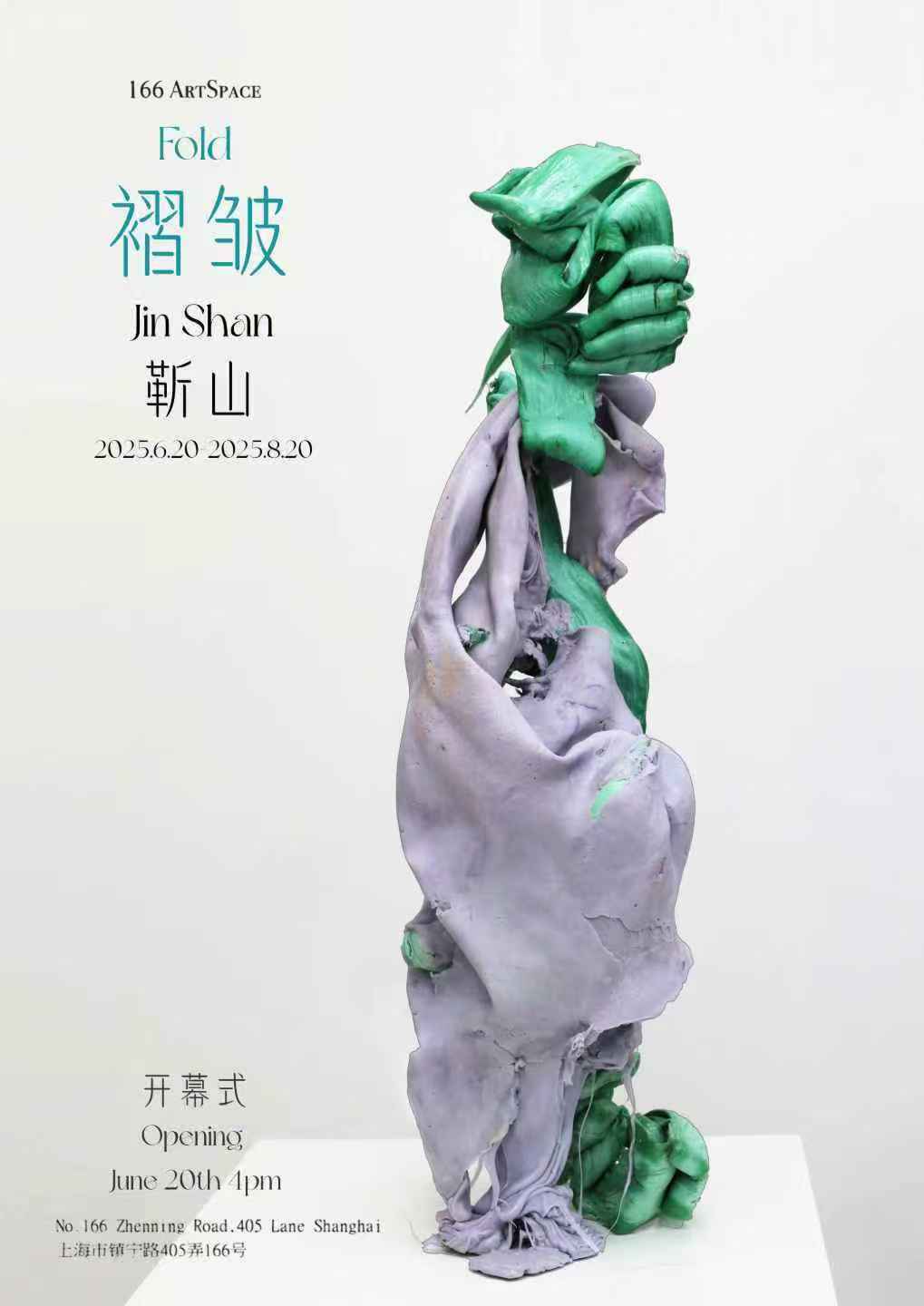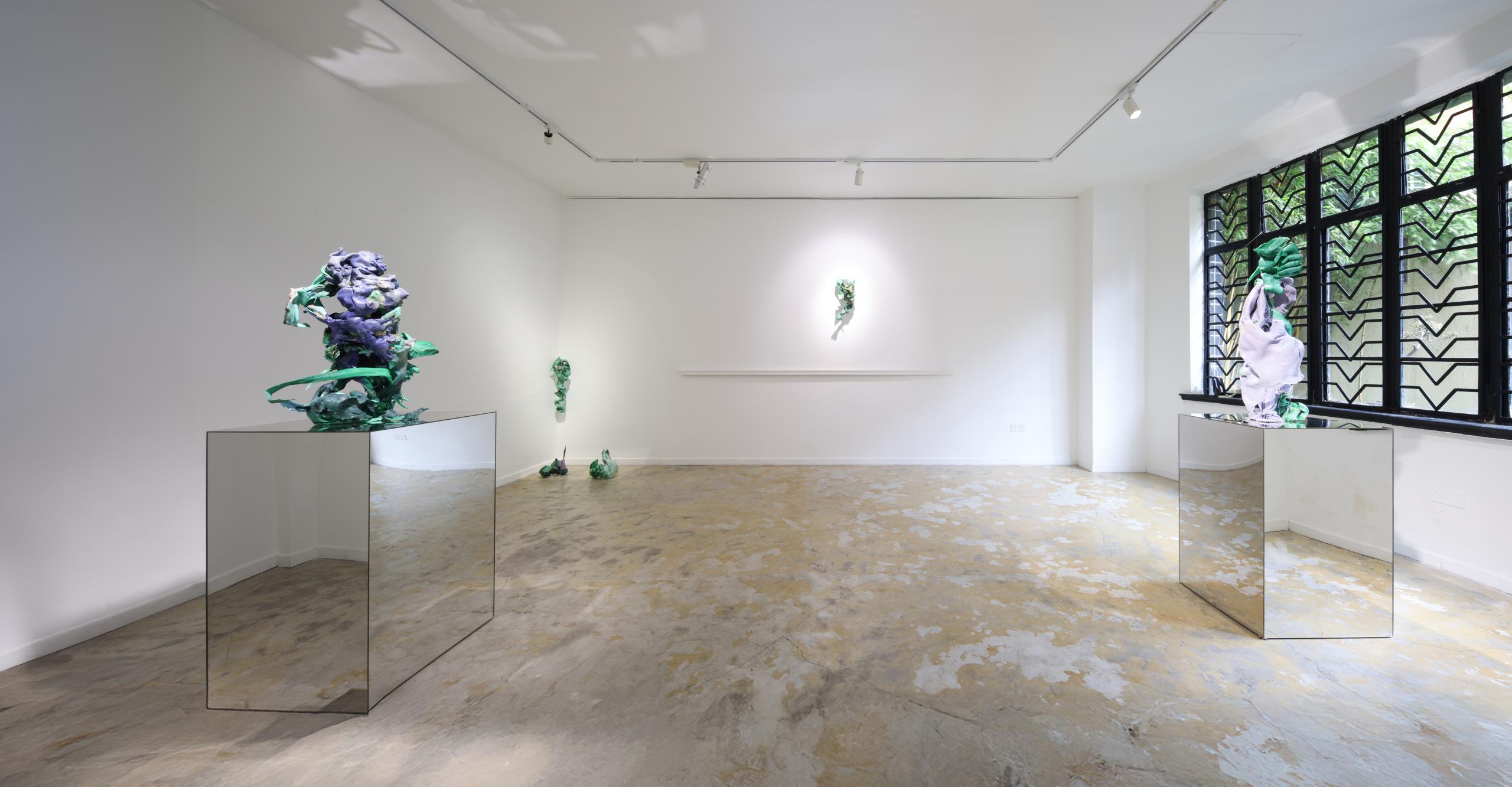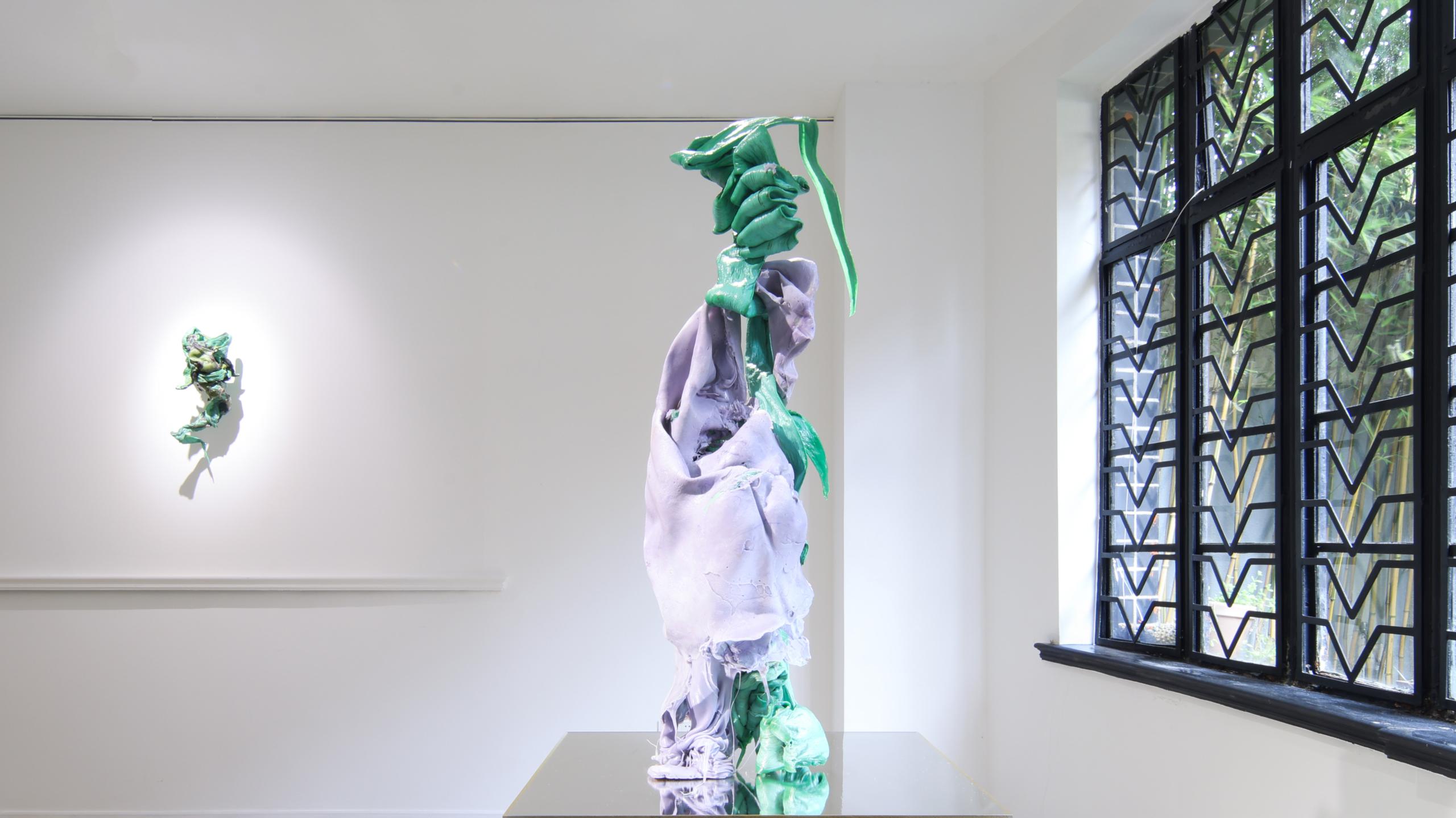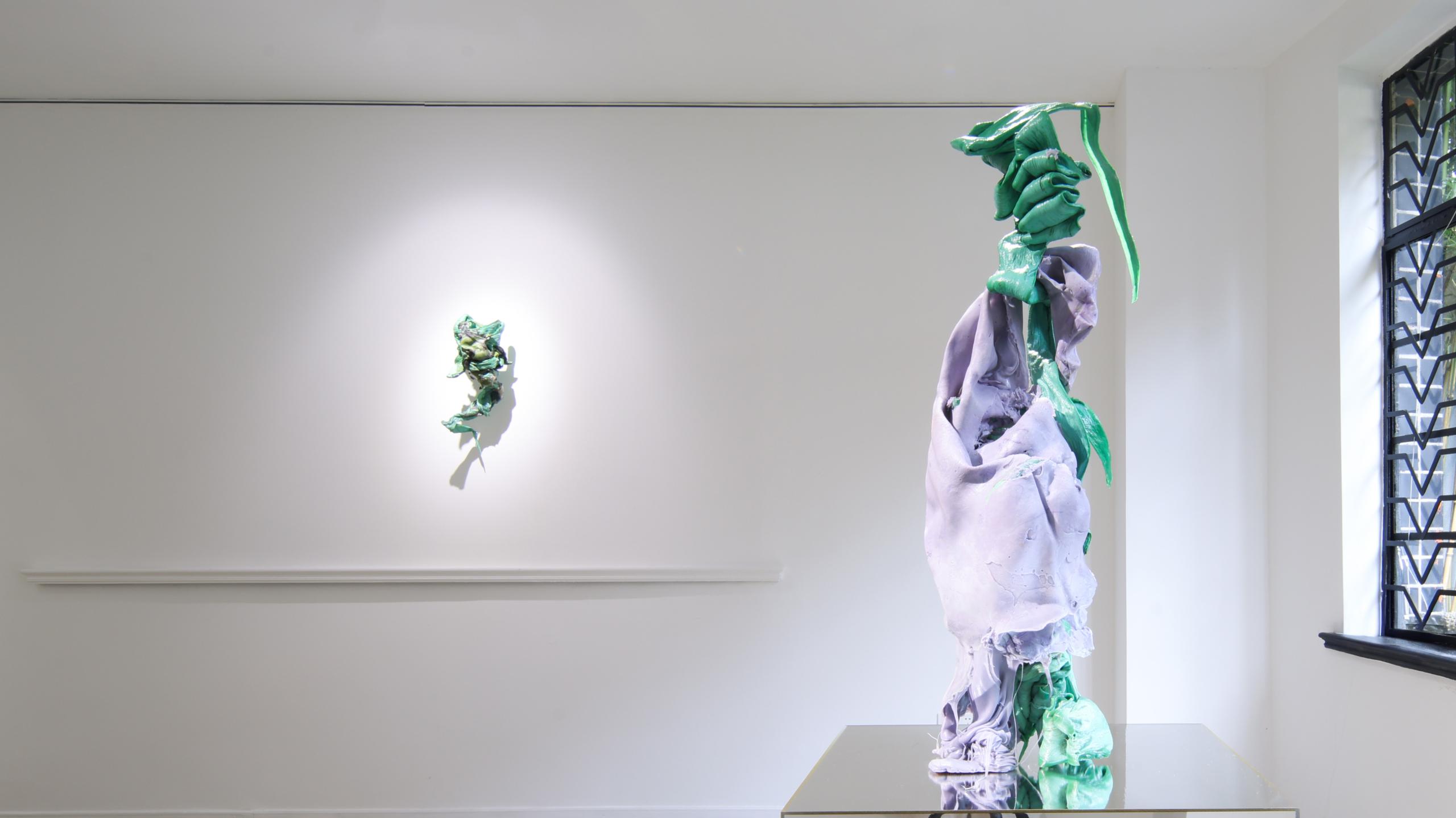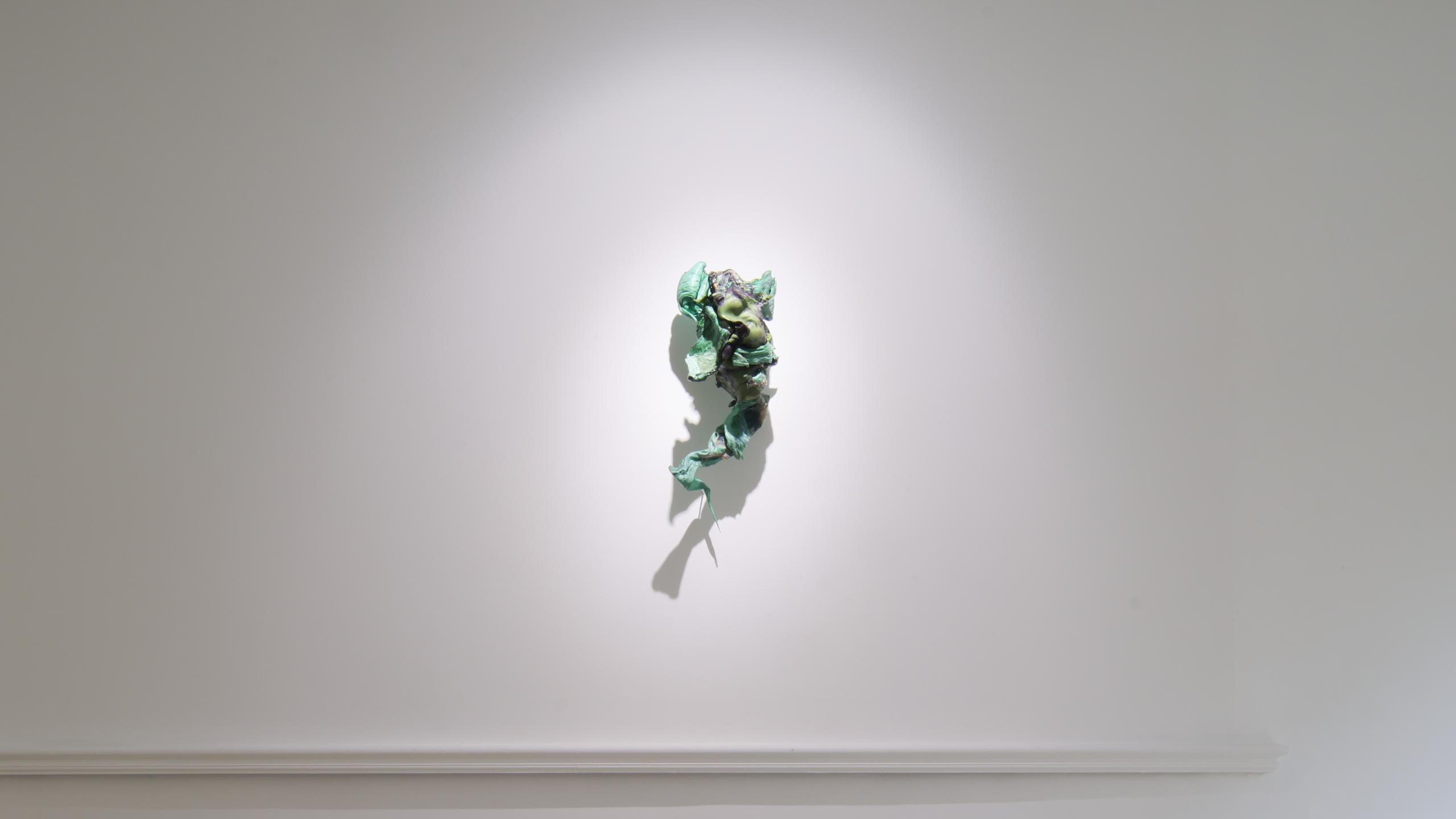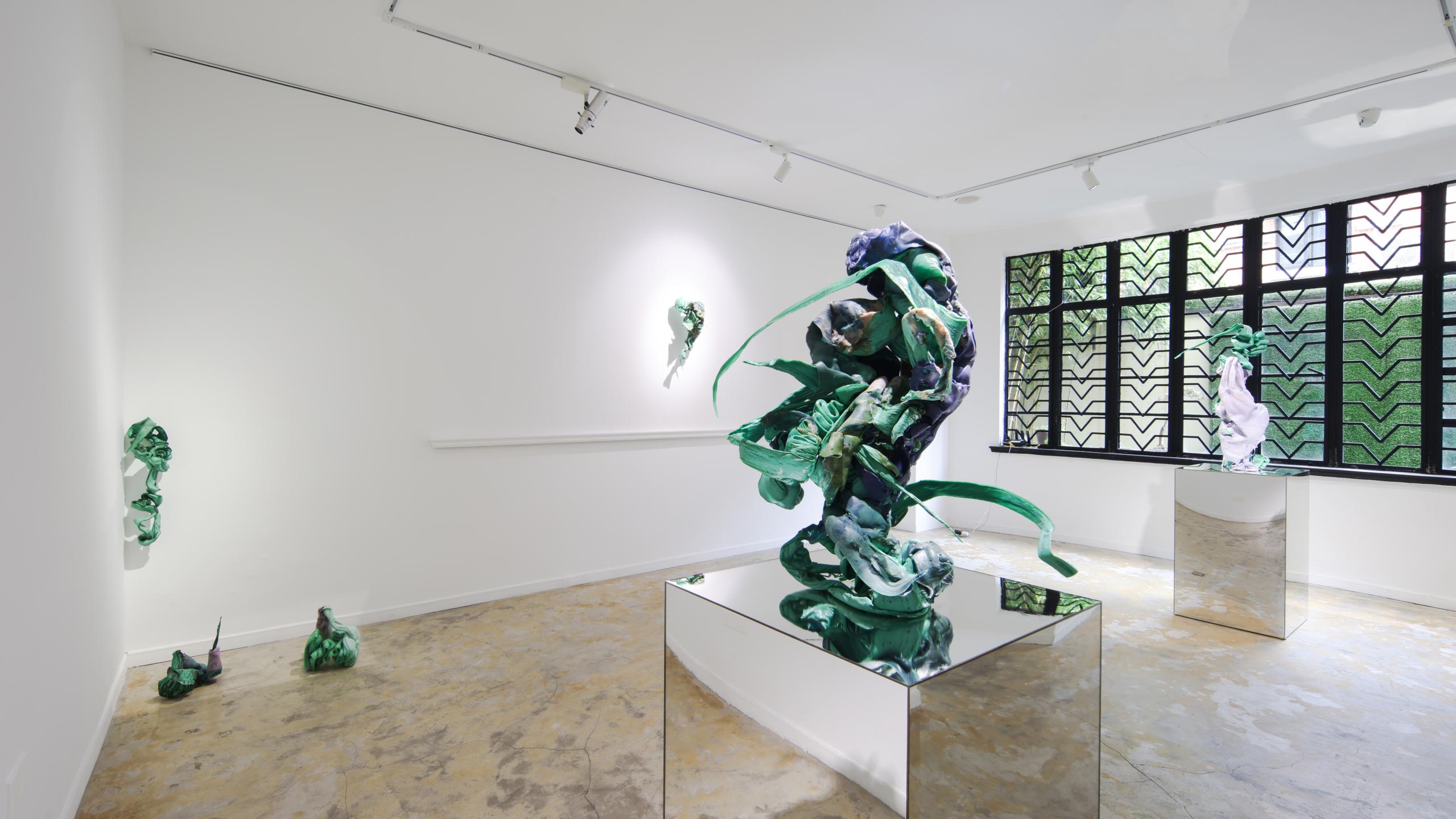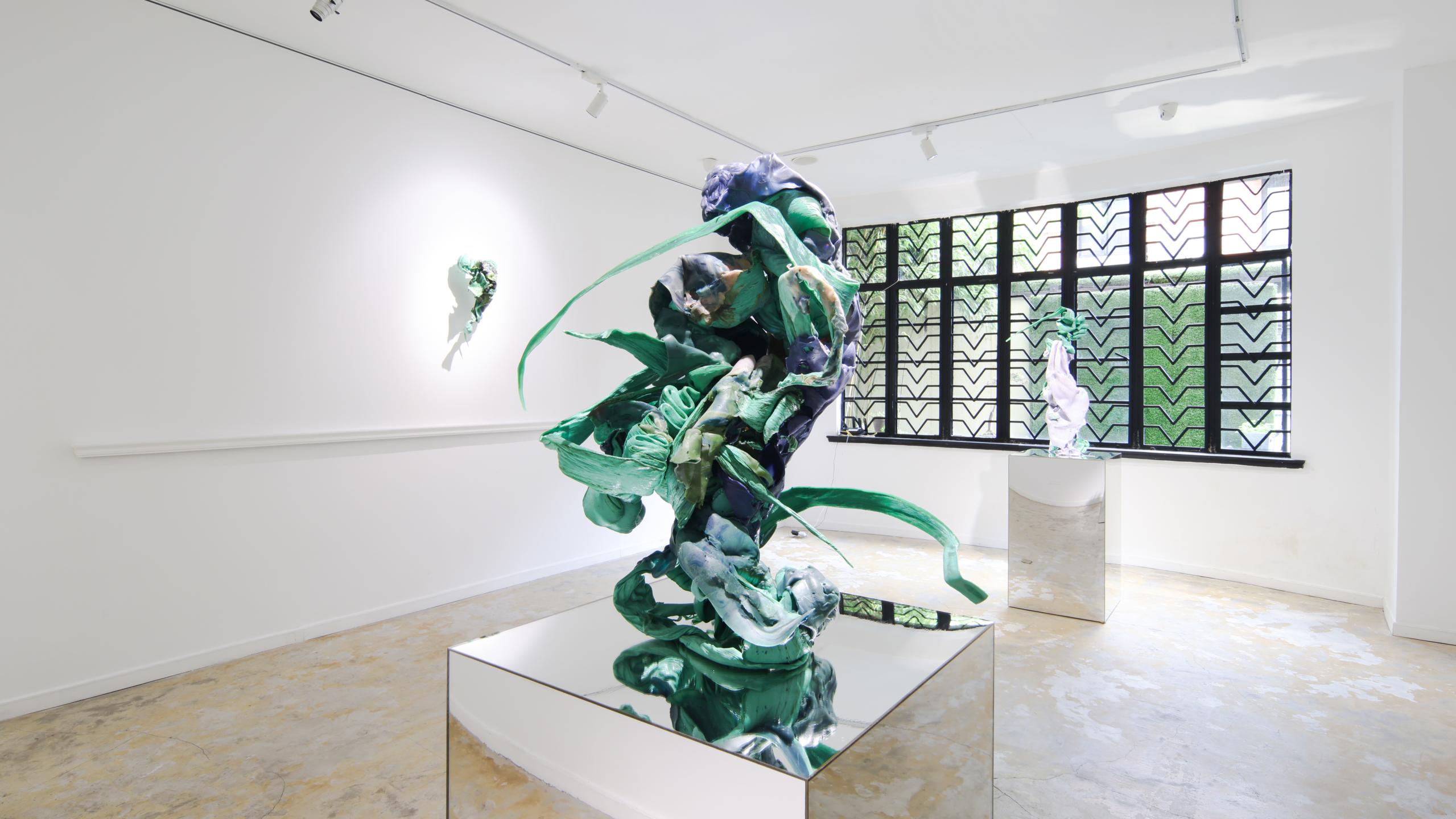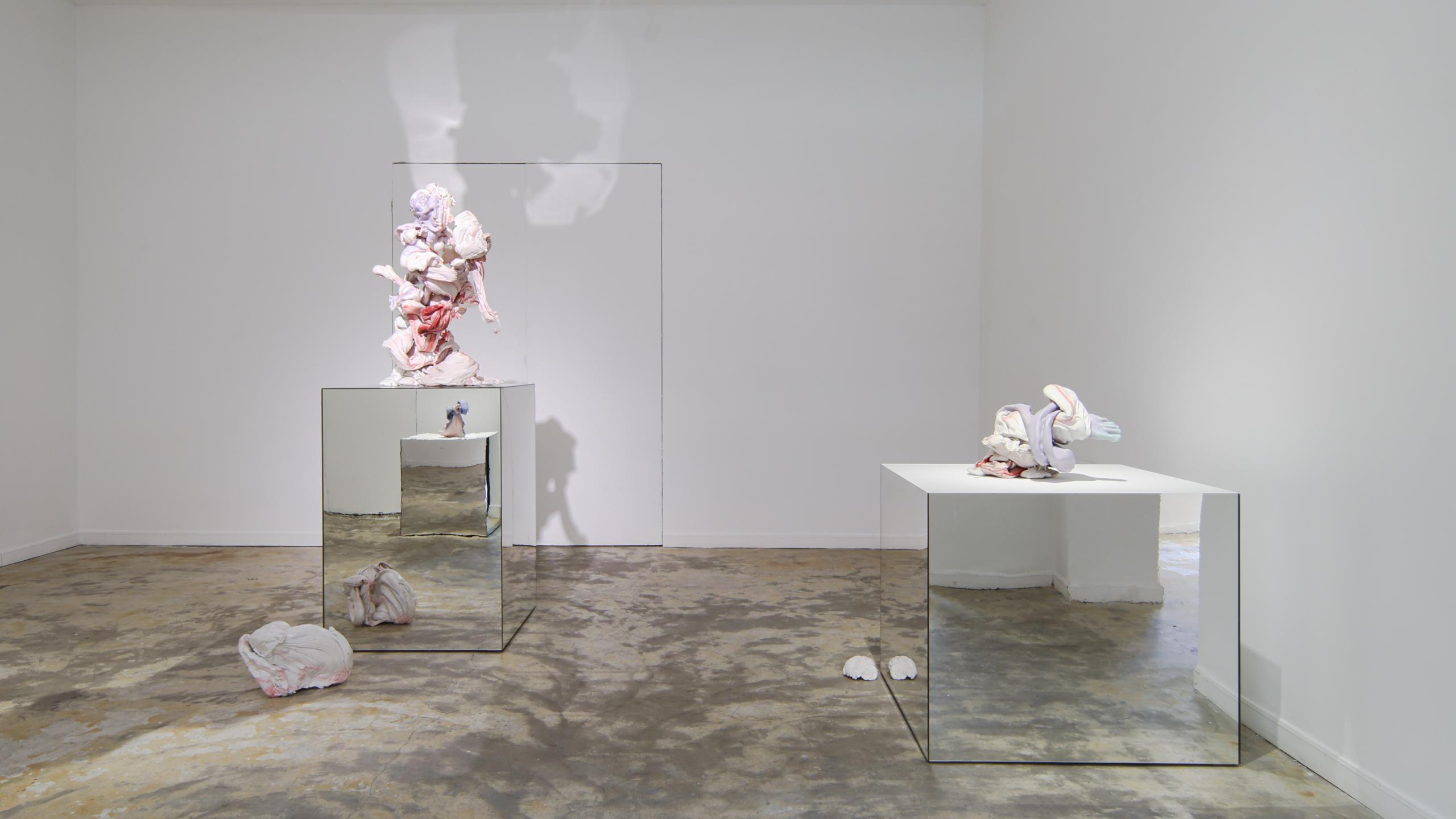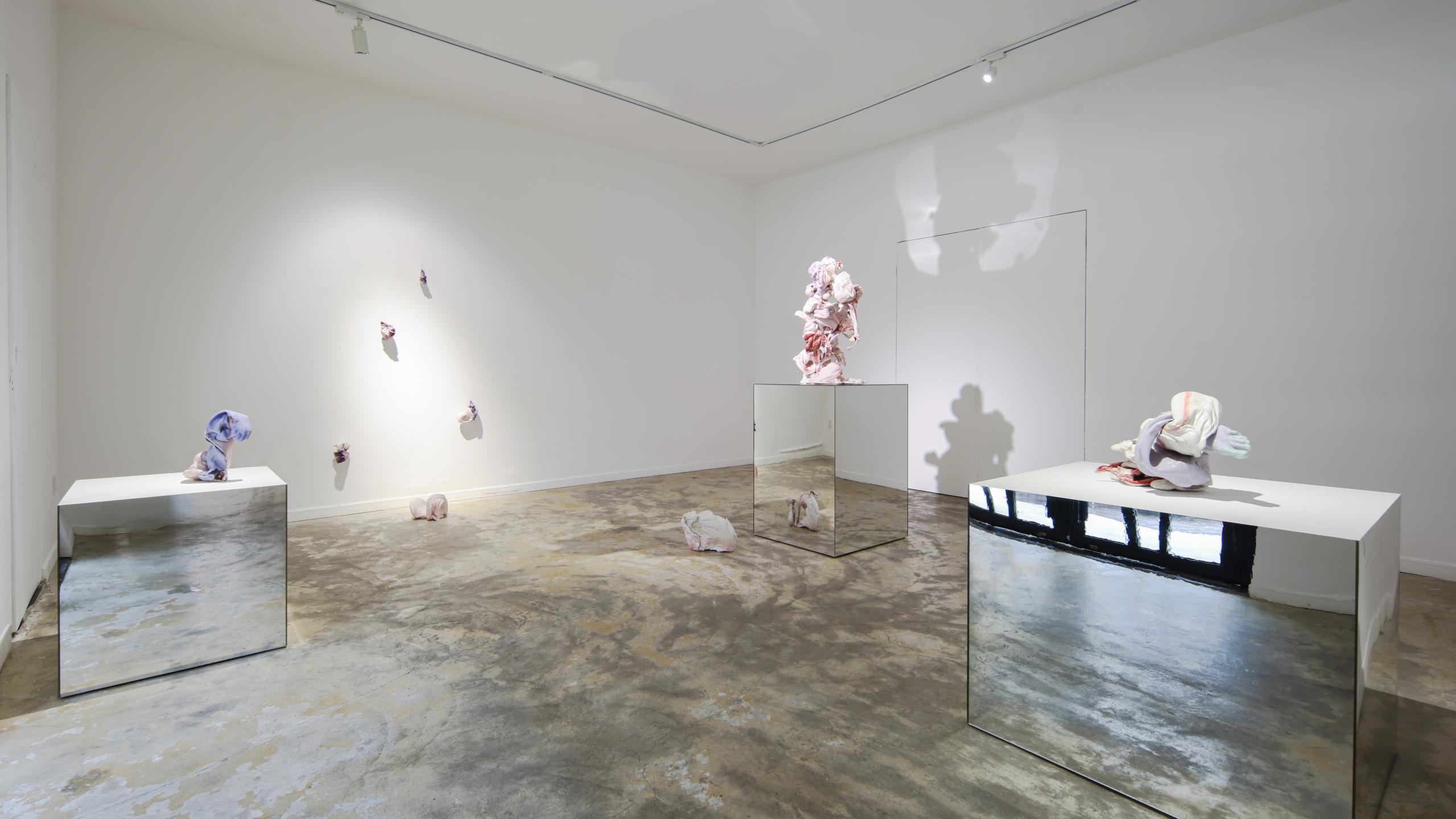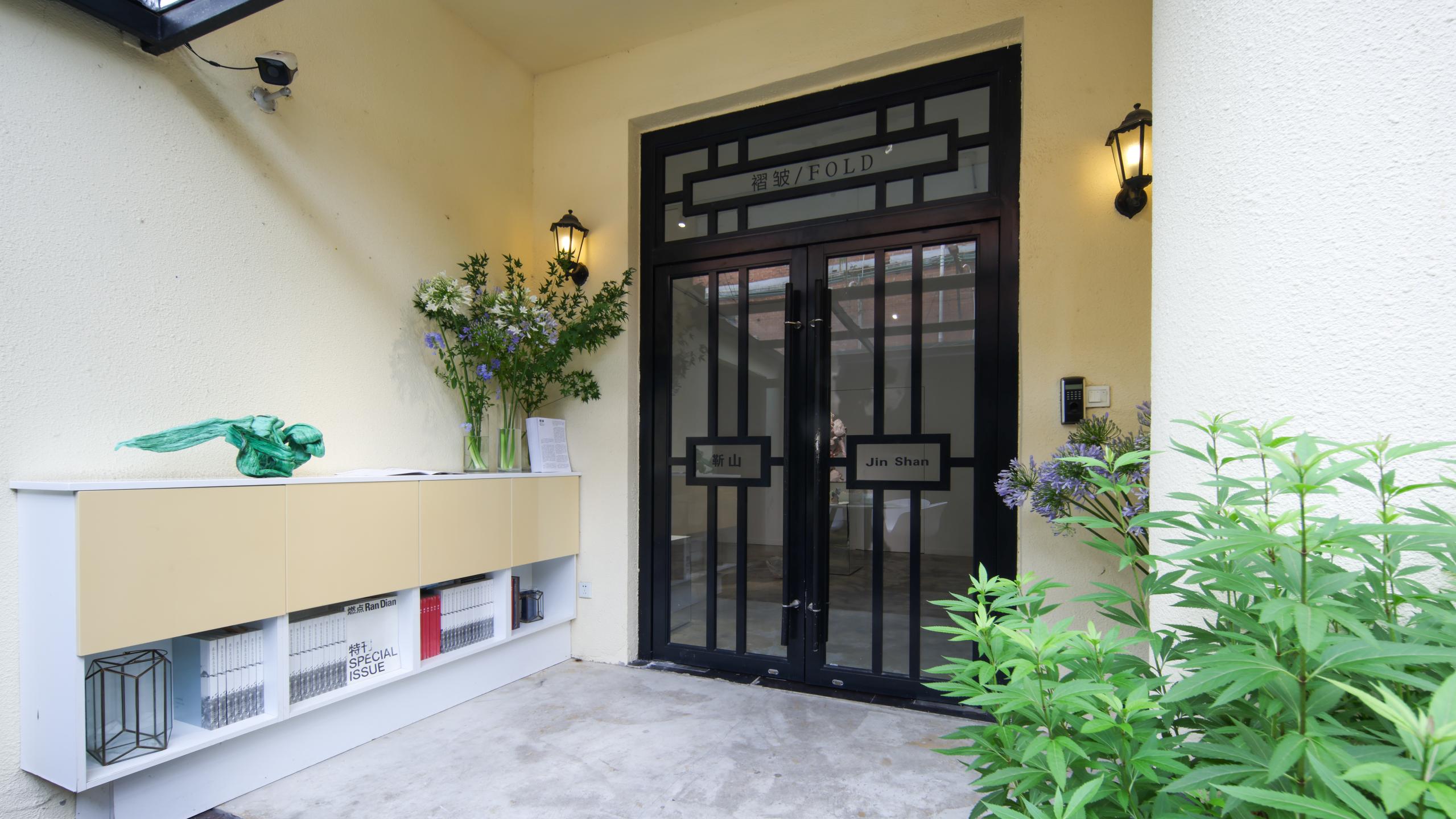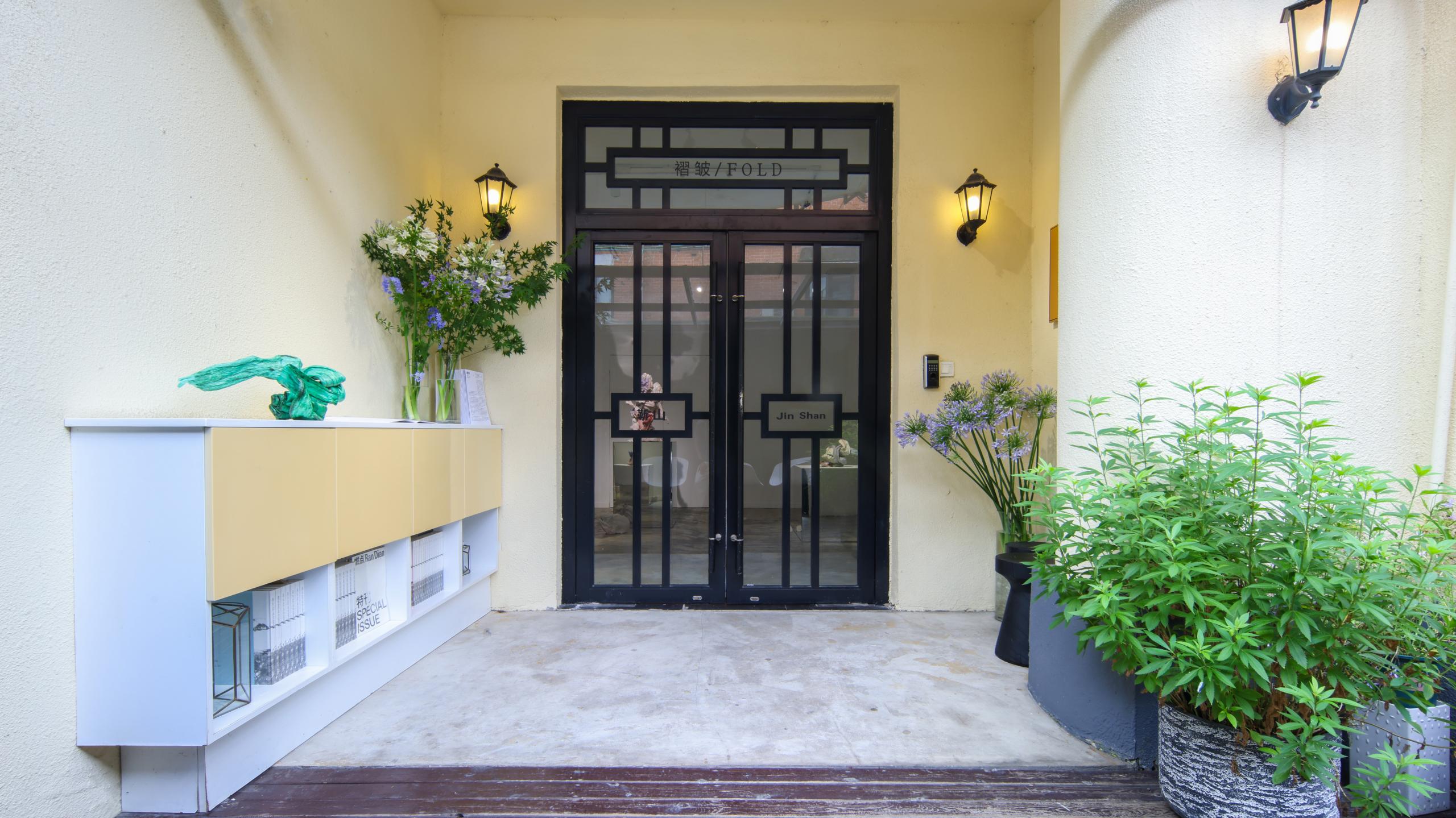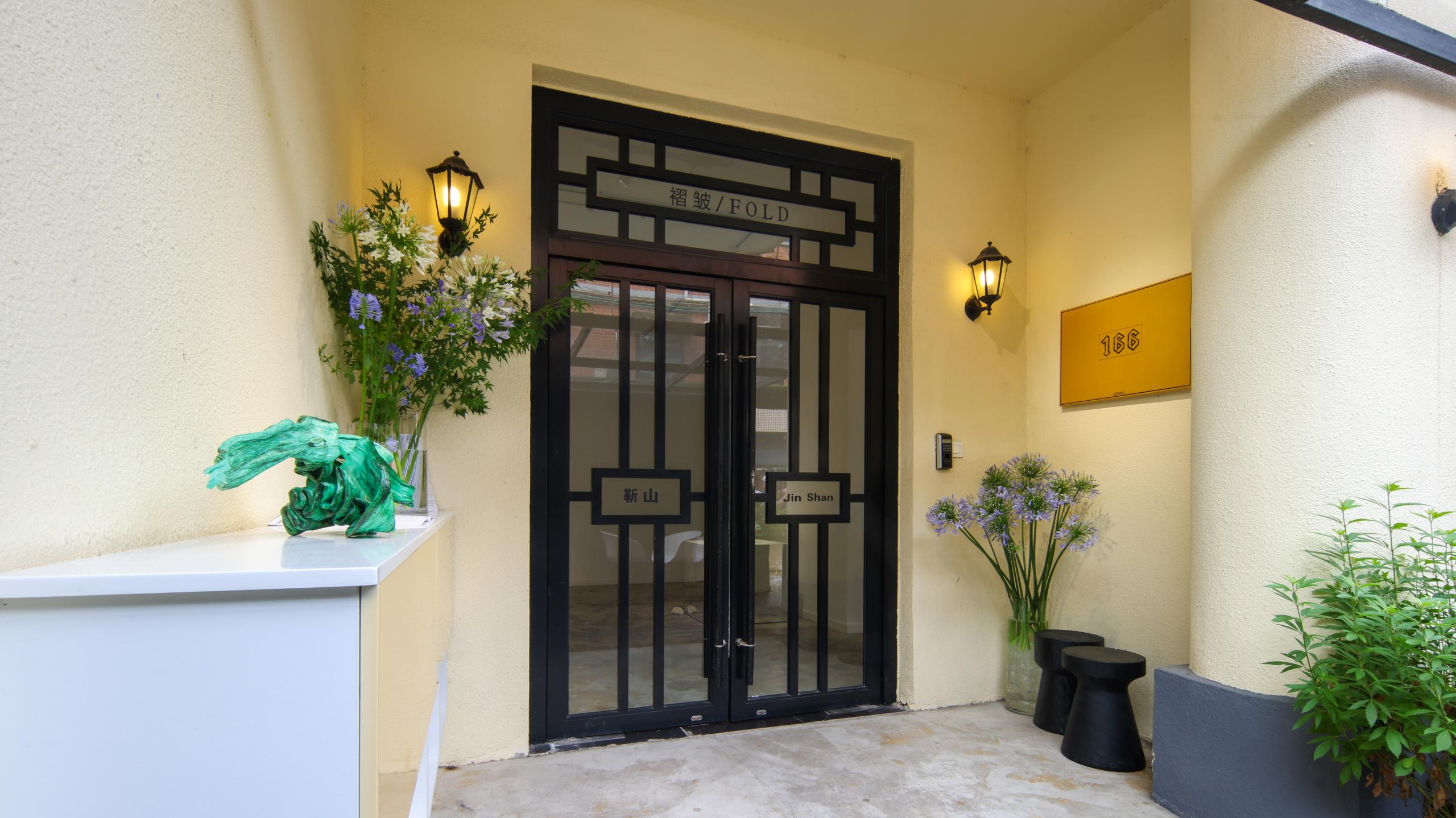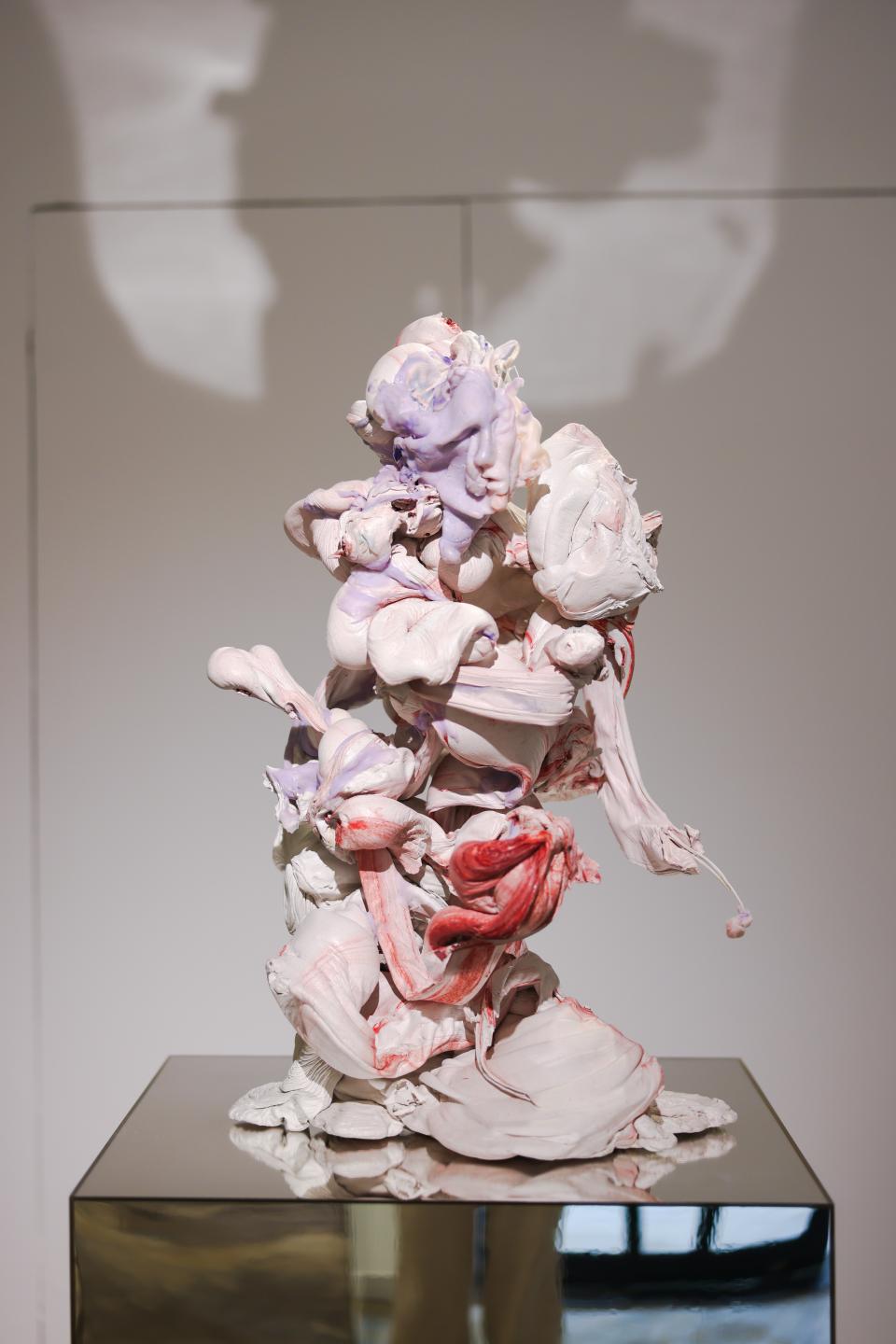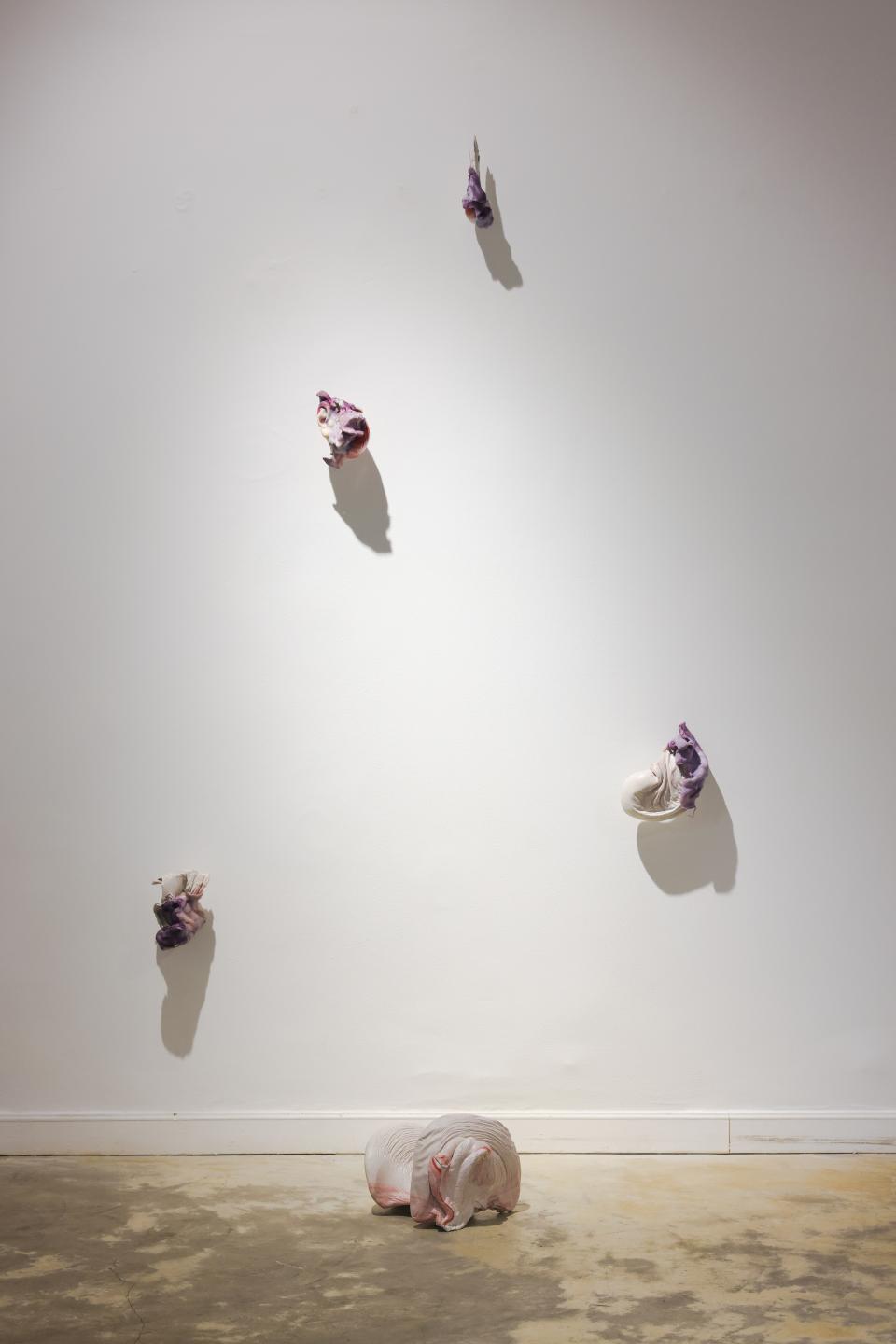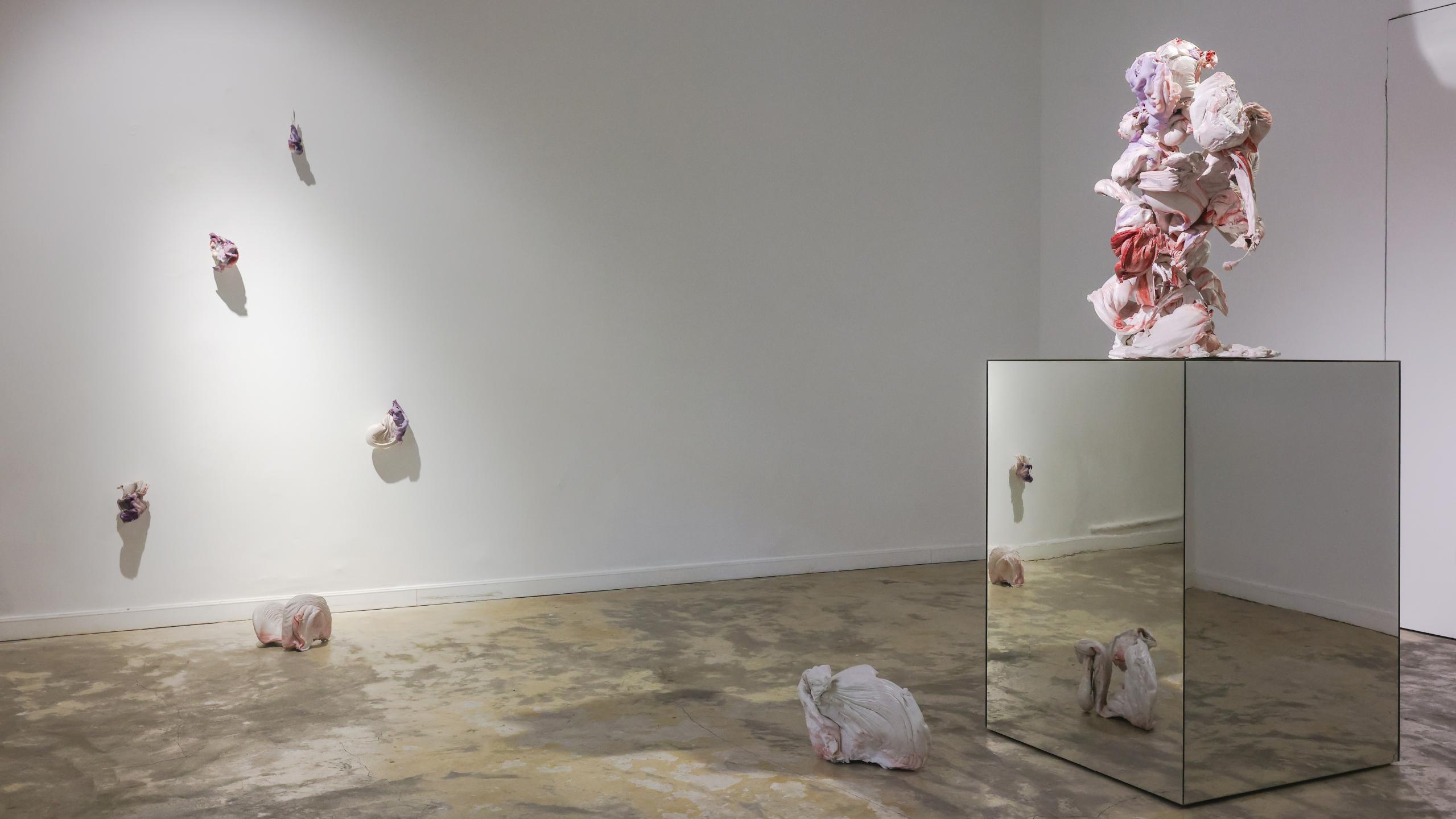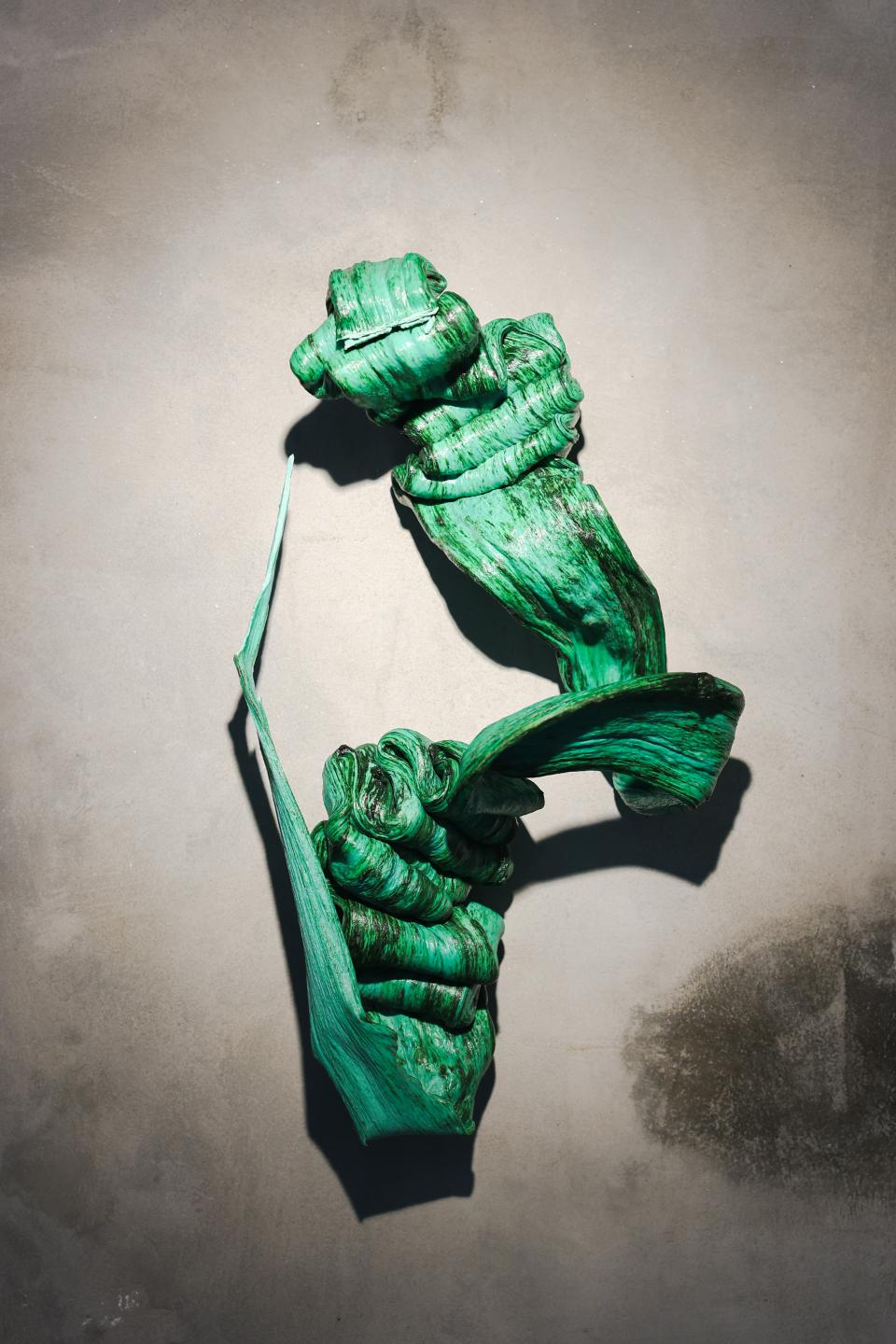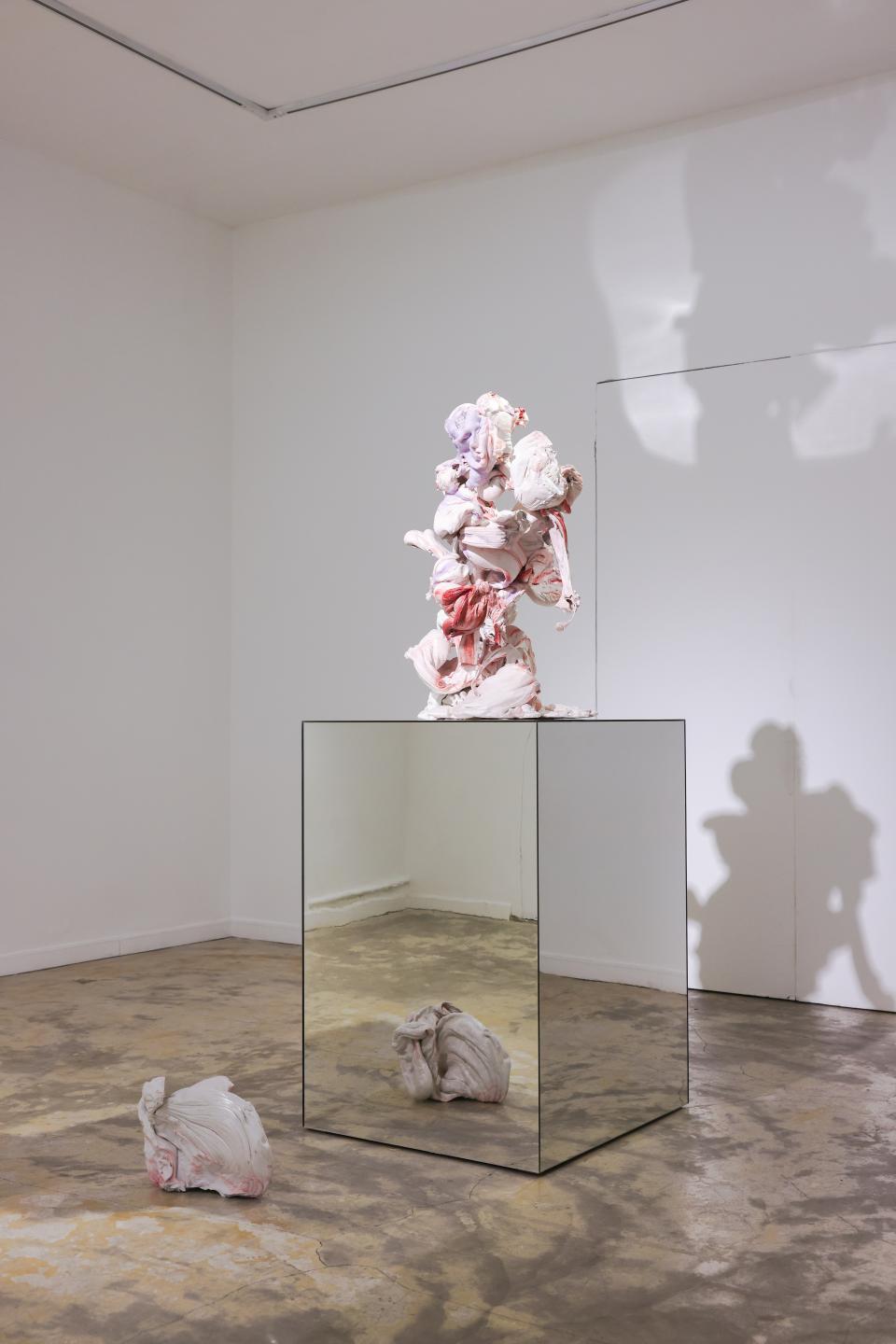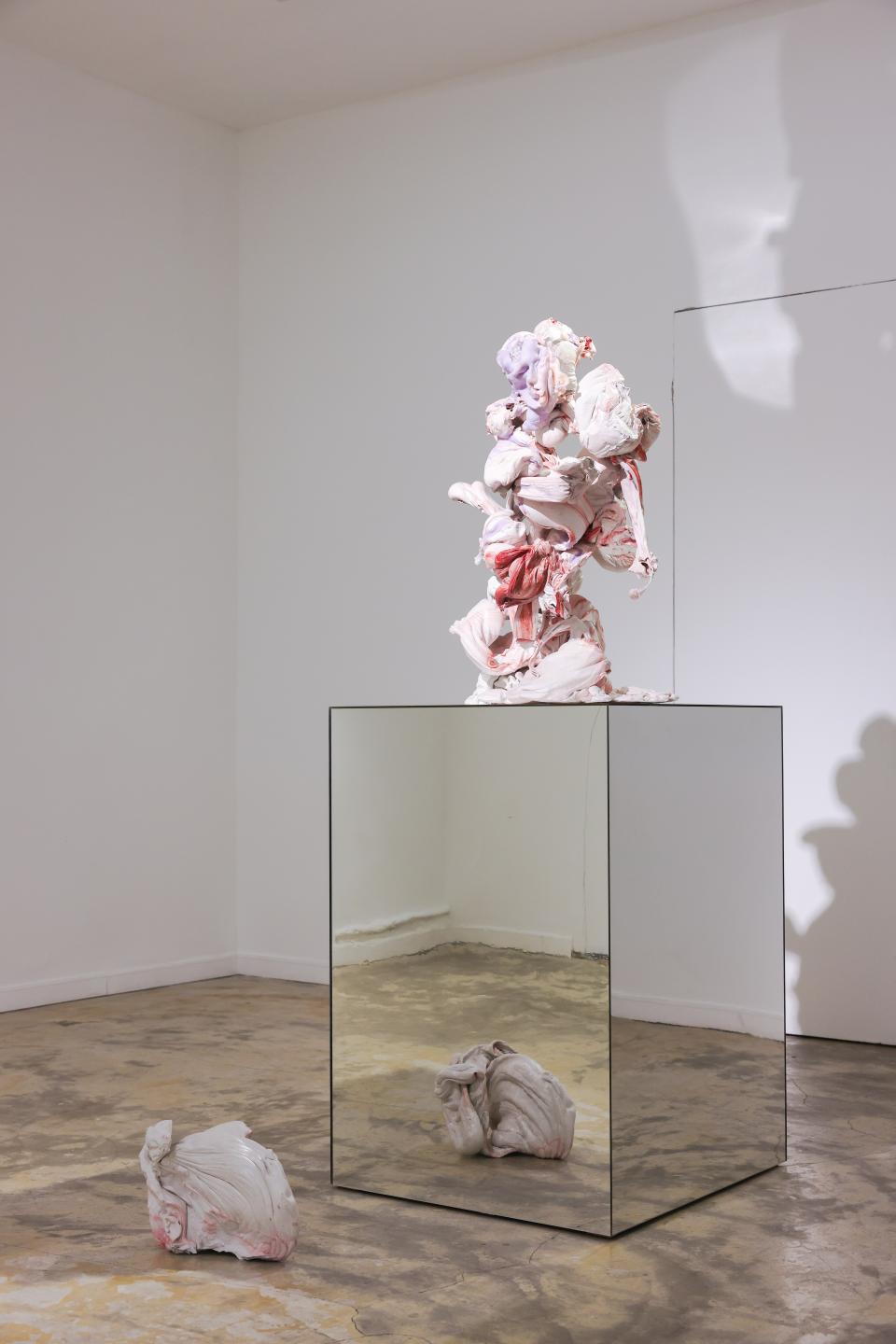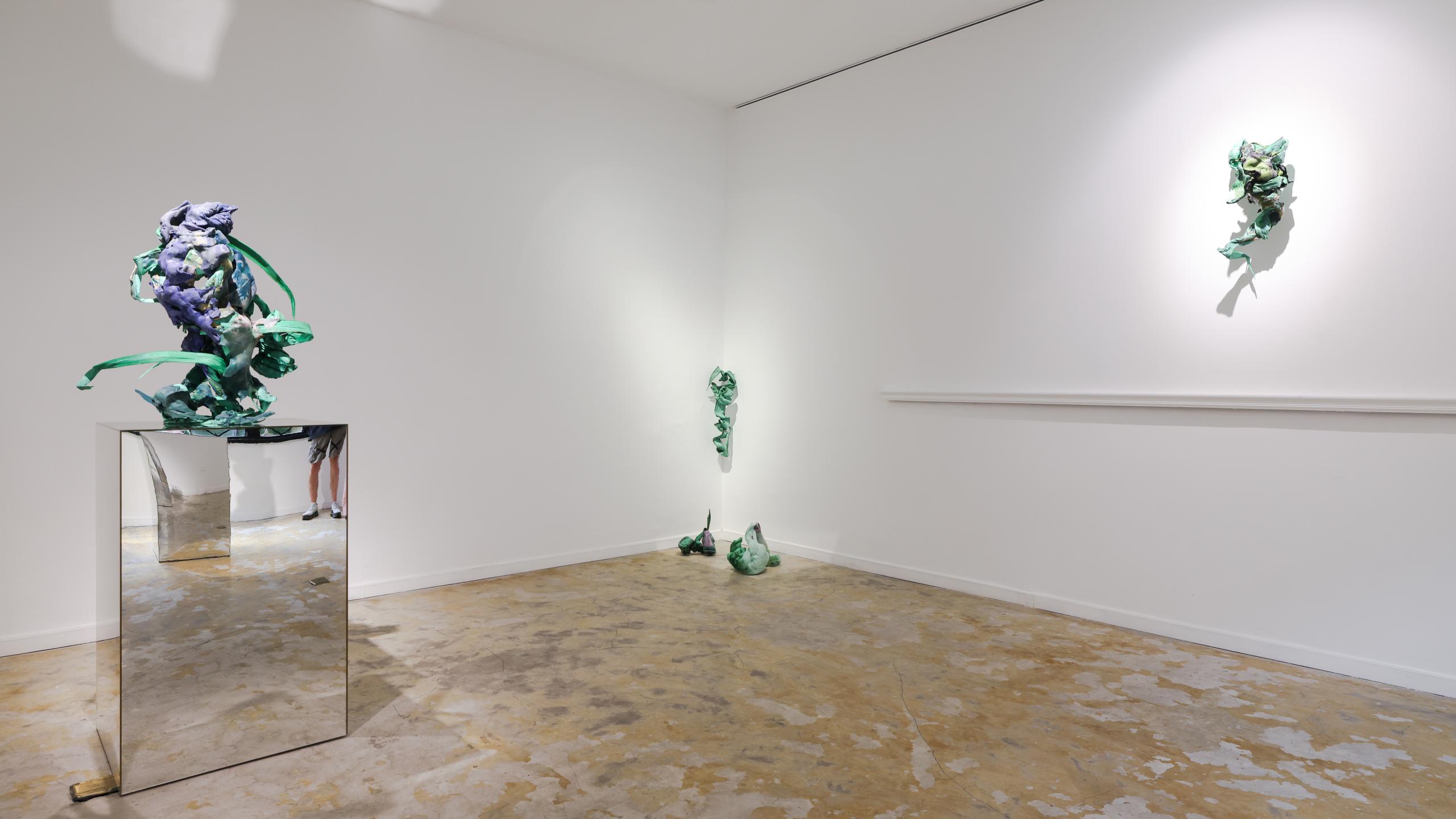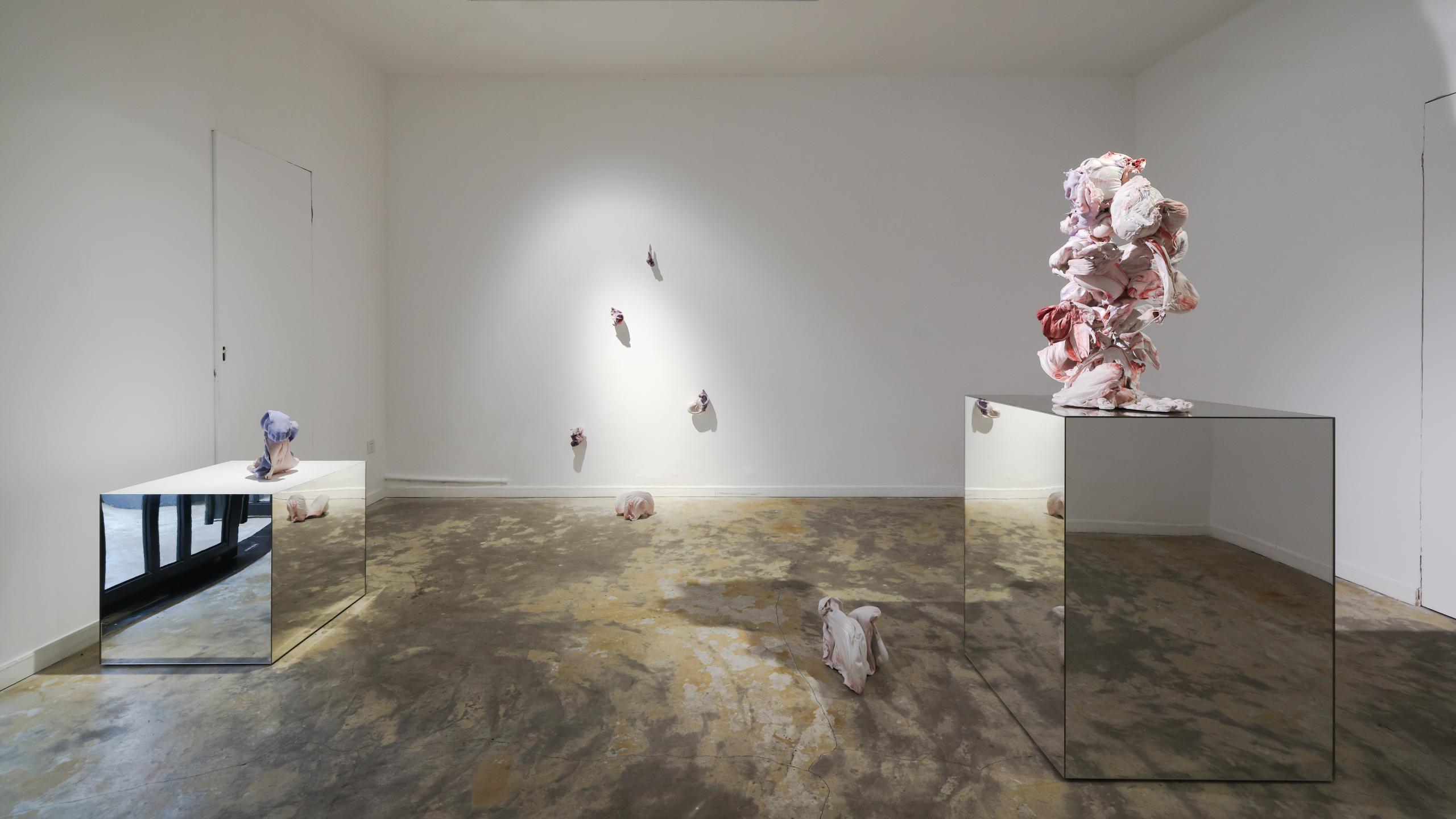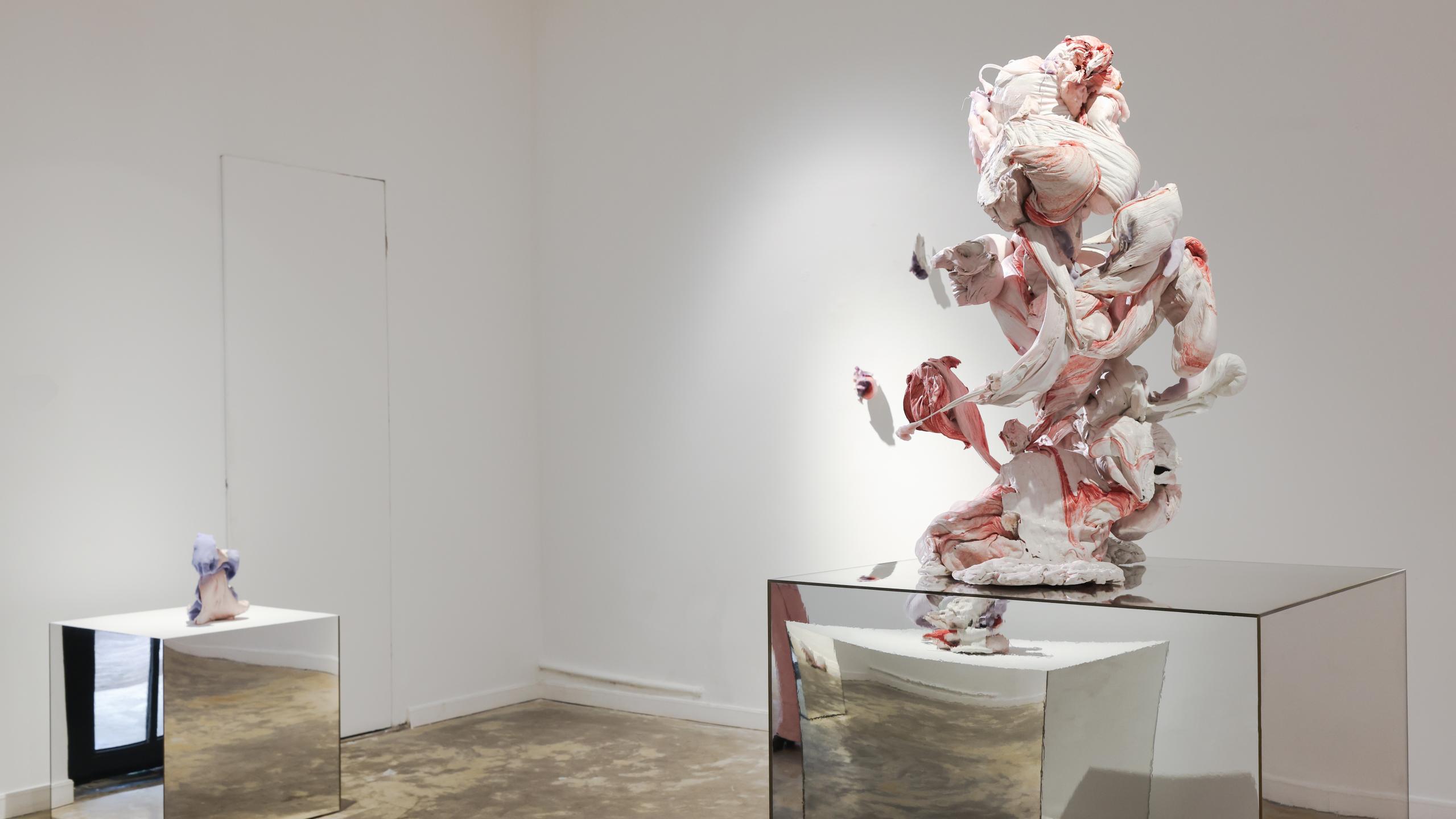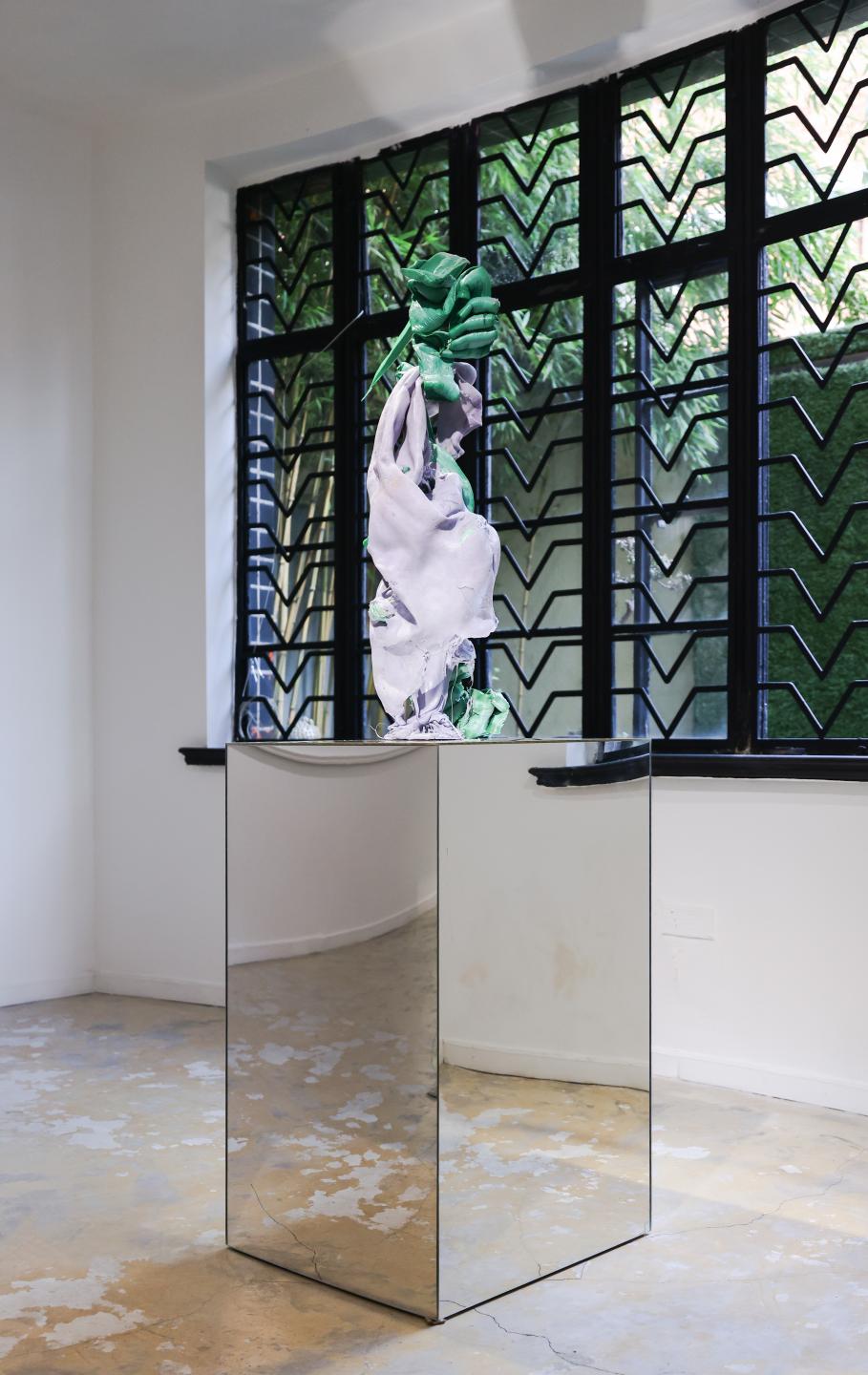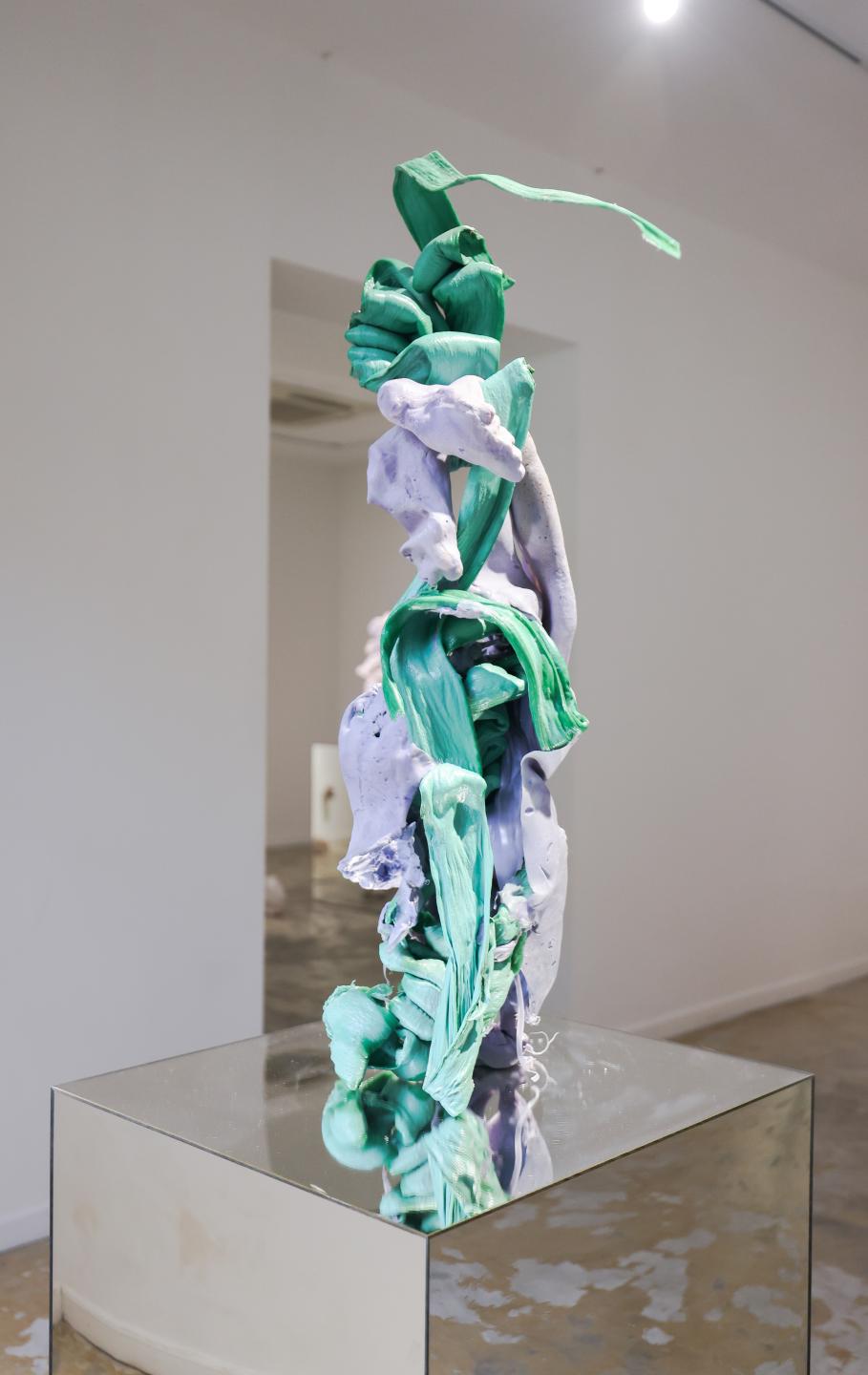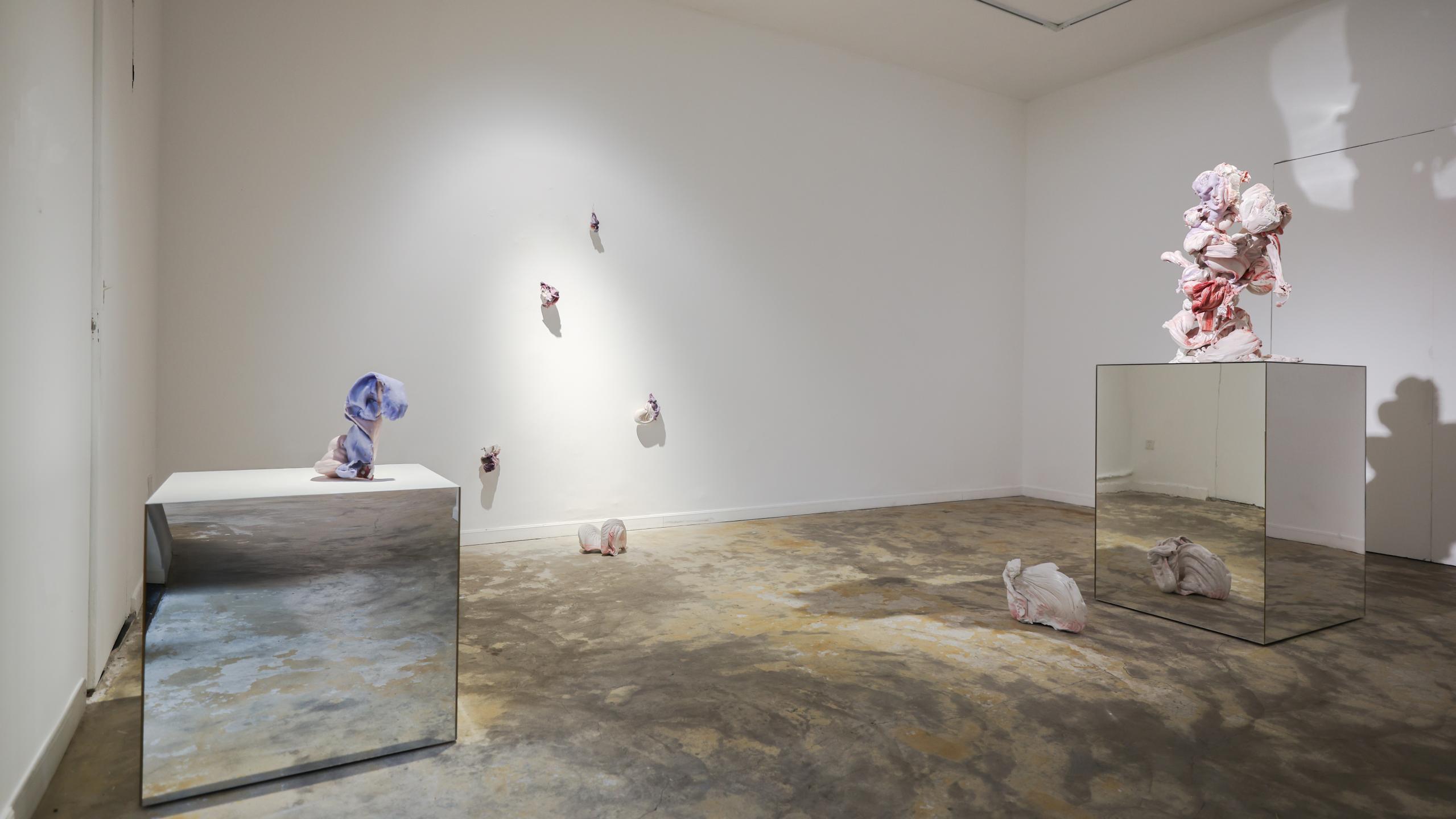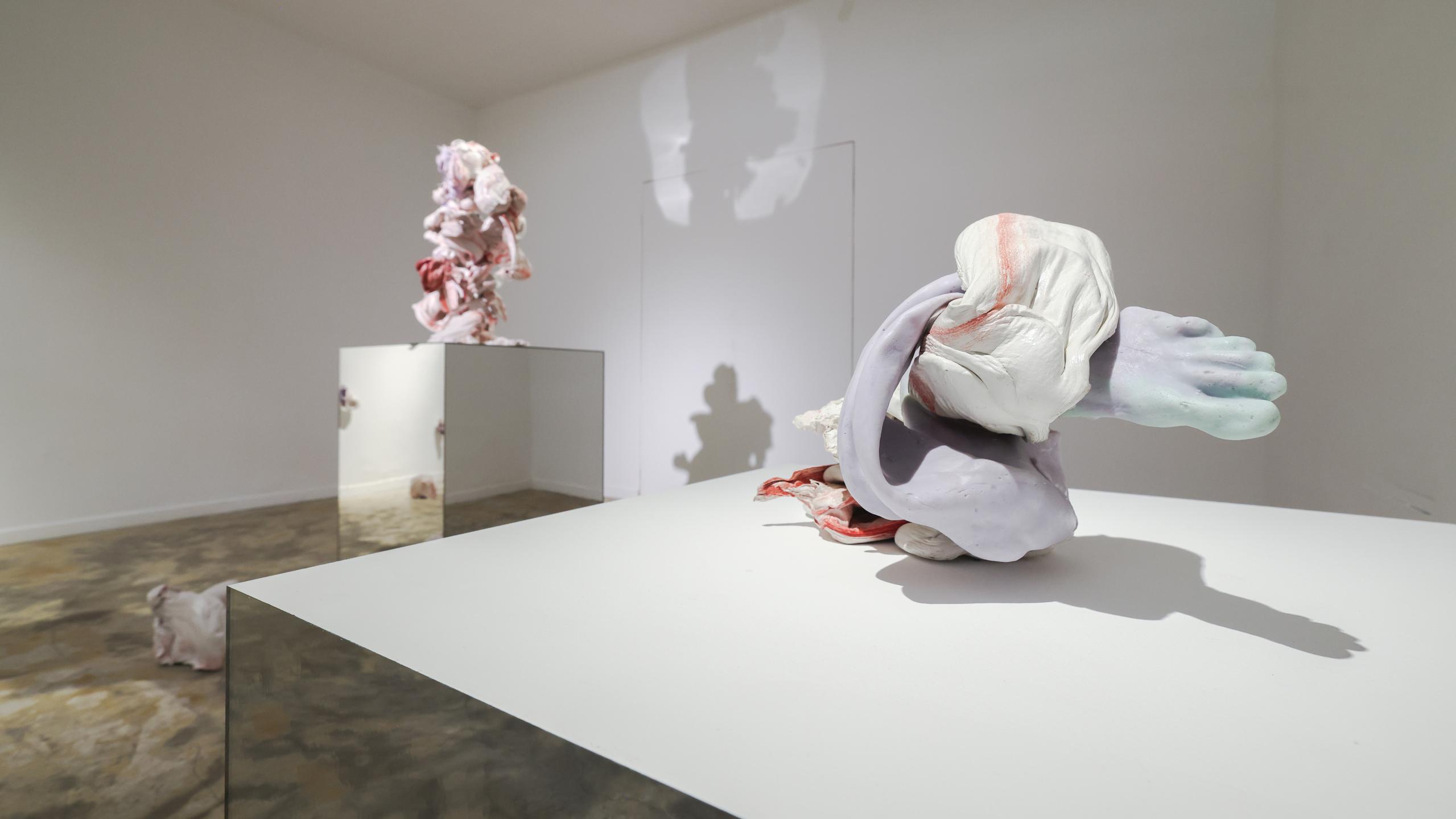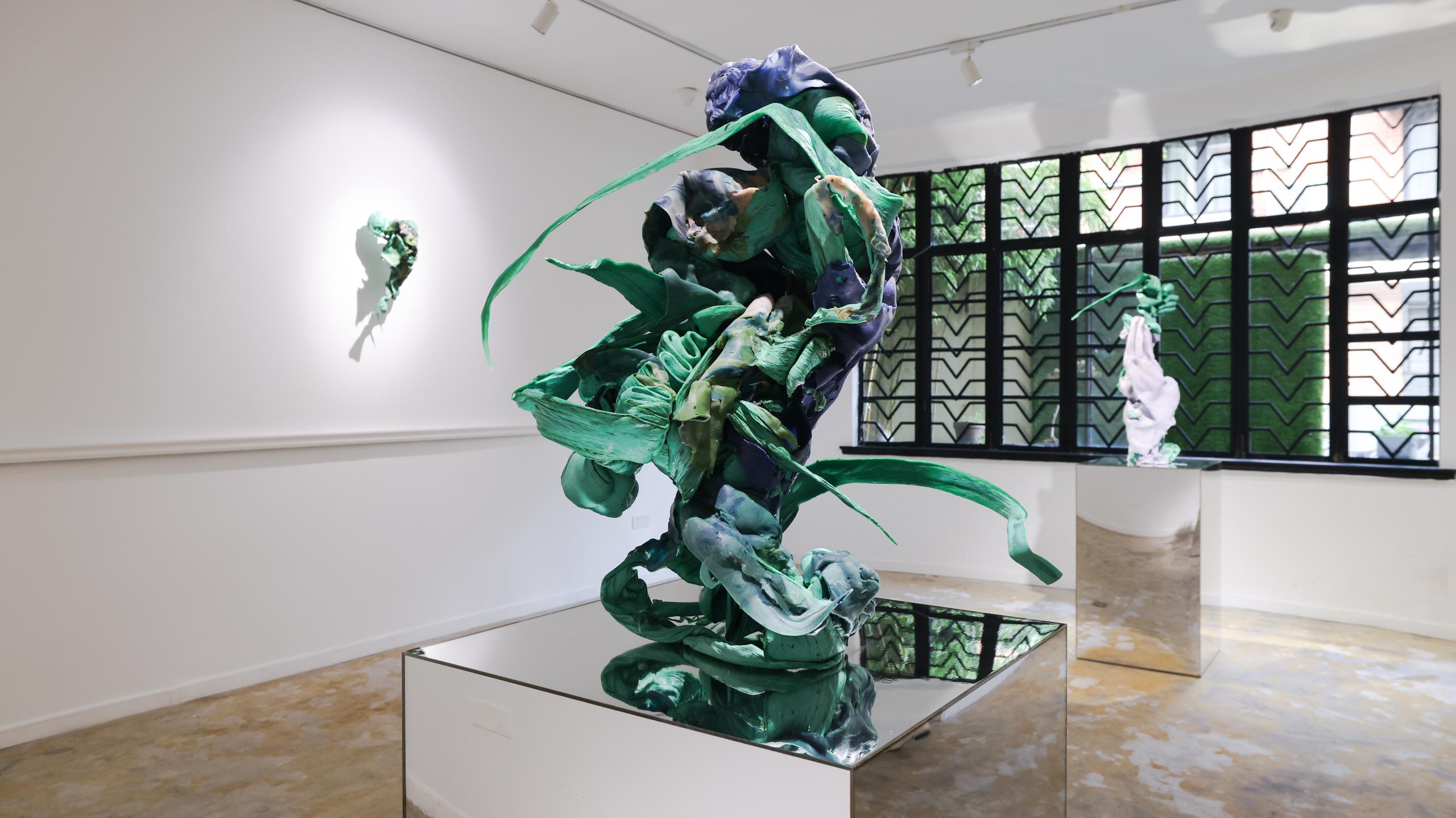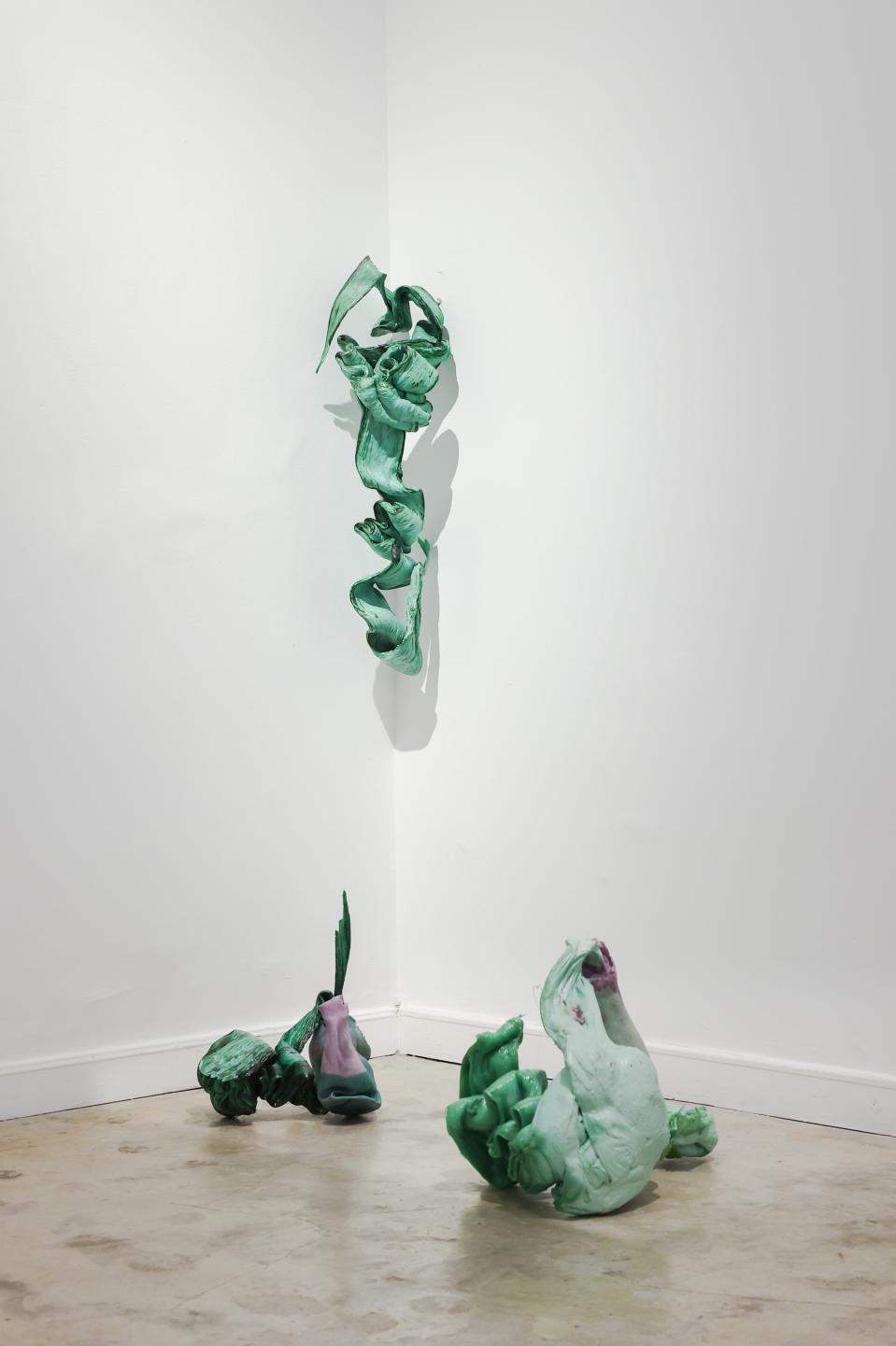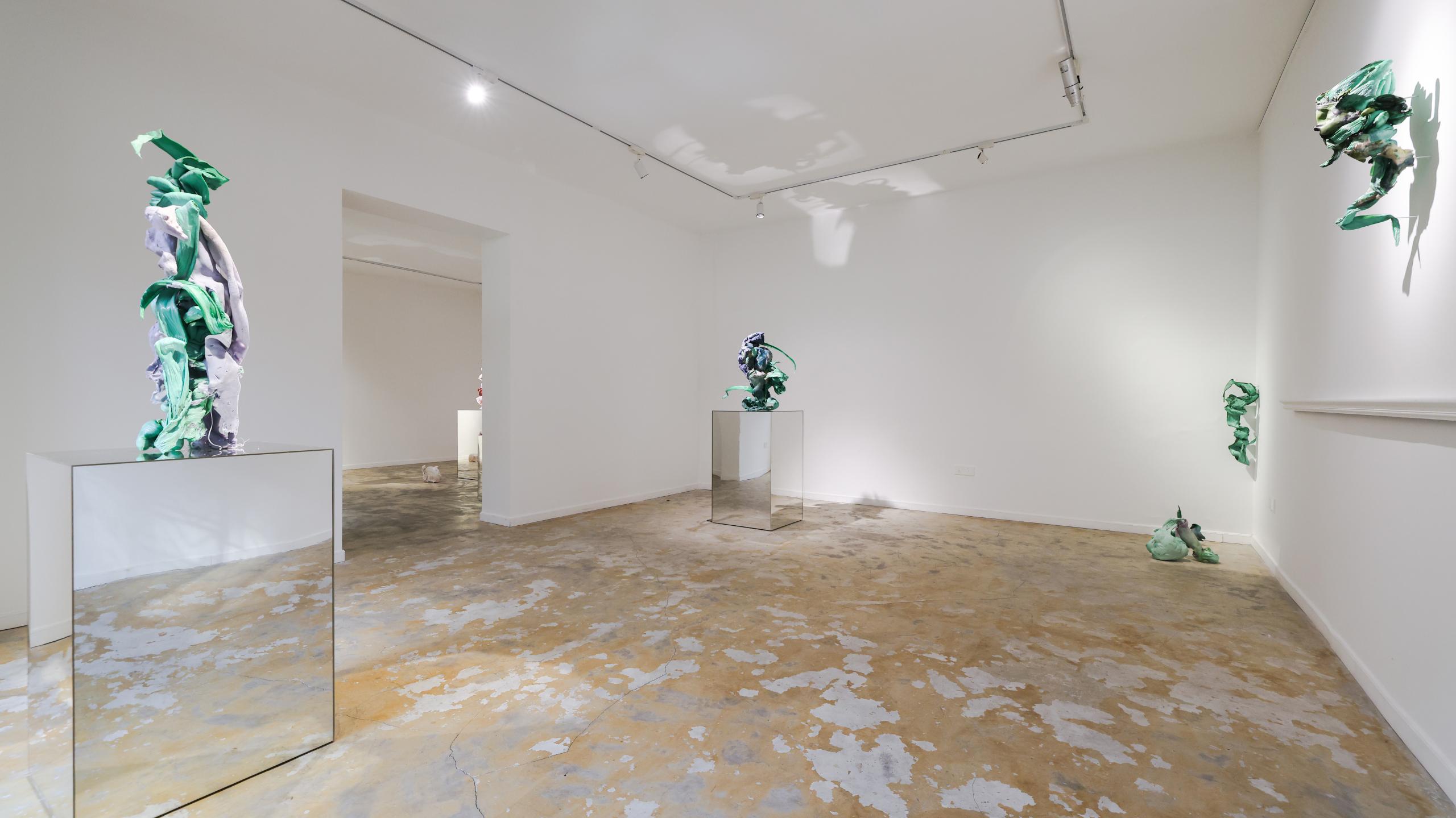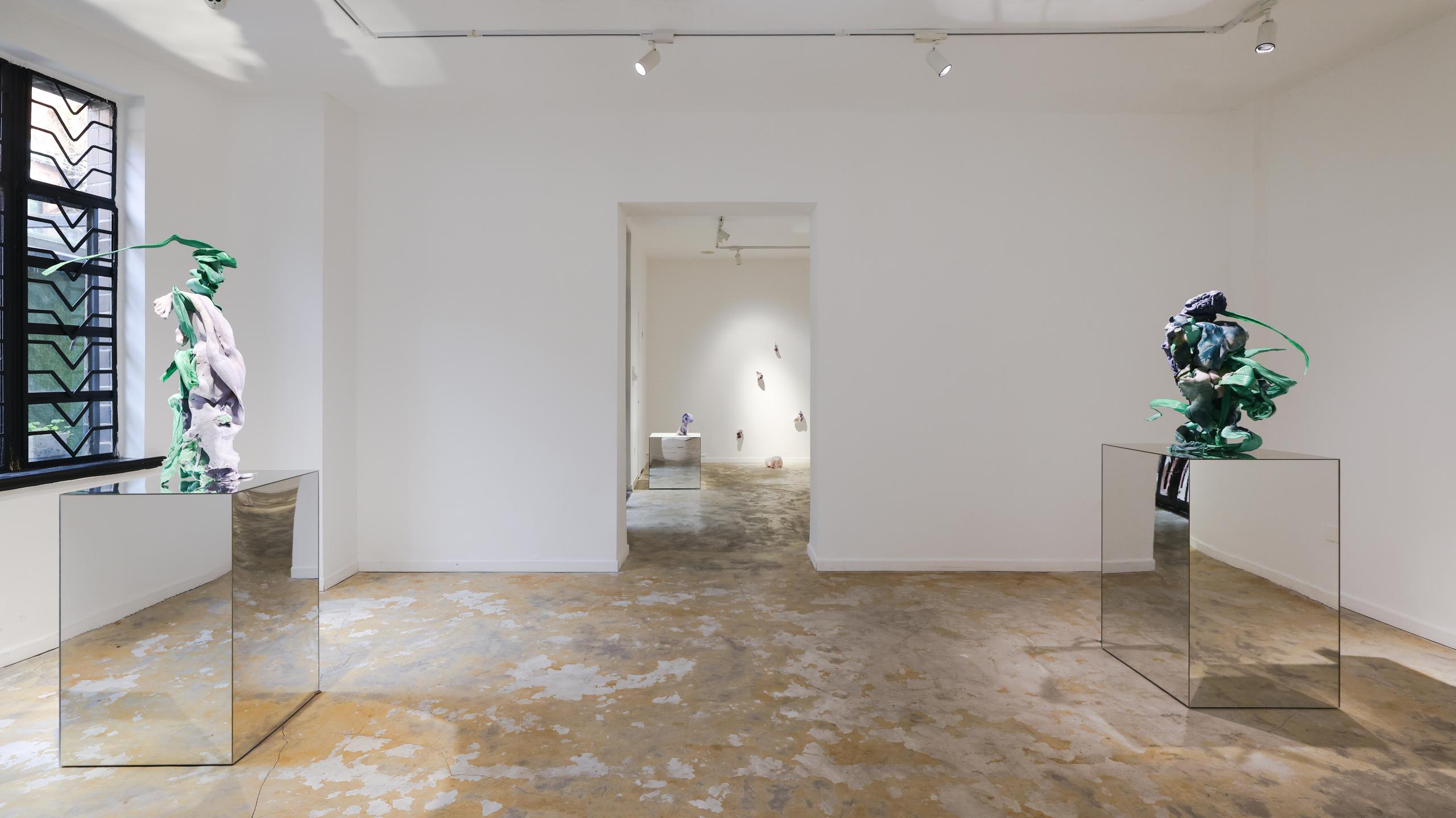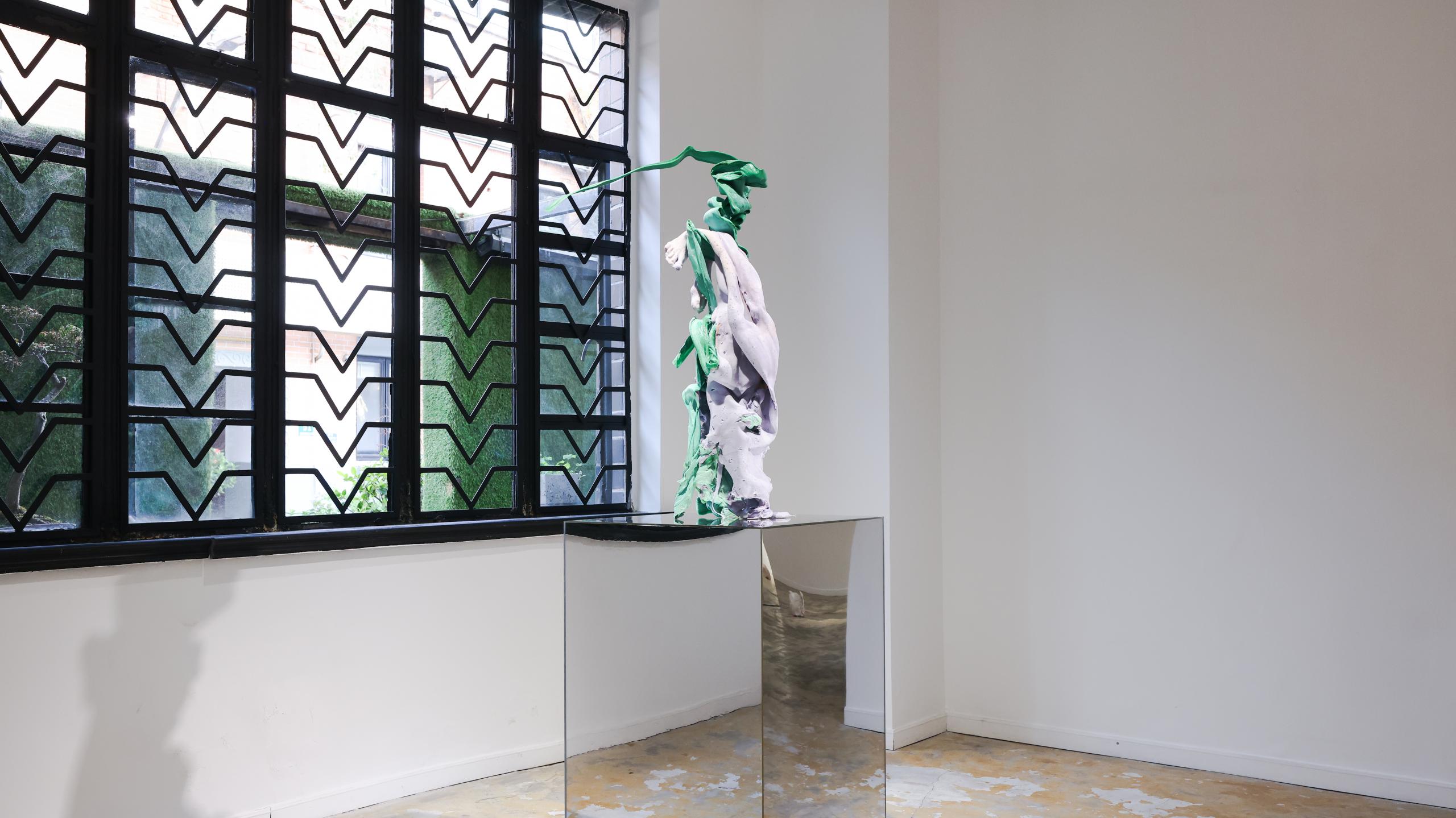166 ArtSpace’s Summer show, “Fold”, premieres six new sculptures by Shanghai based artist Jin Shan highlighting his recent probe into abstraction. On exhibit are complete works of writhing beauty set in a reimagined version of the laboratory in which they were born.
A use of diverse materials is a common feature in Jin Shan’s art leading to recipes of (occasionally) secret ingredients spiced with humor and impunity. His works are difficult to place in familiar categories of contemporary art - combine, happening and even sculpture can at times appear to be crude descriptors. Jin uses alchemy instead to transform a Holocene formula into a delicious broth.
A 2007 piece by the artist reprised a 17th century Belgian fountain sculpture - “Manneken Pis”. His version posed the Brussels prepubescent (replete with water works) pissing into canal off a bridge in Venice. Commissioned for the biannual, the work was quickly destroyed with the motives for its disappearance unknown- animated perhaps by a sense of discord or sacrilege. In the same year the Jin built a cannon firing orange ping pong balls into the main hall of a group exhibition in Shanghai sending projectiles cascading throughout works of China’s then nascent art aristocracy.
Celebrated interrupter installations presaged the next stage of Jin’s production featuring a broadly figurative disassembly of art’s recorded canon. Experiments with material began to feature more prominently in this phase. Plastic concoctions developed by the artist and spiced with nostalgia emerged as his tools of expression. Examples include a limb perched on a cement record player wired for laconic spin; a life size skin color gurney in the process of dystopian deformation; and select antiquities - Greek figuration and Gothic fenestration - reprised and then threaded, shredded, warped and bitten.
In the current exhibition elegant towers emerge from layered sheaves of pastel palette (thick barks and tongues) braided into totems of comfort and eroticism. “Finished” sculptures are placed amongst botanical and anthropomorphic appendages of indeterminate purpose intentionally blurring the line between the two. The ambiguity is authentic as the artist has yet to determine whether incomplete pieces are failed experiments or components of future work.
Jin’s attention to formalism in these works reflects a shift from figuration to abstraction and from dissection to reconstruction. Viewers are now encouraged to focus less on what has been removed and instead to envision what may remain to be added.
The new sculptures project a profound sense of longing. They extend themselves in space as if in search of a caress. They bloom their complexity shyly, reluctant to provoke the crises of confidence we so frequently experience when standing before fine art. While both stunning and enigmatic, they encourage us not just to stare but to credit our perception.
Like many artists, Jin works over time and largely in isolation to create objects meant to relay an intimacy to recipients most of whom he will never encounter. His story telling acknowledges the unpredictable nature of communicating through fine art with deep empathy - seeing it more a a tragedy than a triumph. This in turn provokes compelling responses.
“I like it a lot but it scares my pet bunny” reflected the daughter of a fellow collector on first seeing one of the artist’s haunting figurative sculptures on display in her home. In a similar vein, my (then) toddler son chased bouncing balls around Jin’s ping pong installation inadvertently taking in much of the adjacent art in manic pursuit of orange orbs.
One aspiration of the current exhibition is to cool anxiety that often surfaces when we first encounter a new or unfamiliar body of work. It’s a seemingly uncontroversial goal which carries profound risk - one which the lens of innocence alone cannot resolve.
There is an inherent injustice in leveling an artist’s creative investment and the fast formed opinions of his jury. Our adult impatience in pursuing fixed meaning in art only exacerbates this injustice.
Undeterred, Jin seems to draw inspiration from the tension inherent in his exchange with an audience. His aversion to both indifference and enigma deliver tales of comfort and addiction. “Fold” once again invites us (peelers or plasterers) to find our role in an unfolding saga.
166画廊夏季展《褶皱》将首次展出上海艺术家靳山的六件全新雕塑作品,集中呈现其近期对抽象艺术的探索。展览现场重现了作品诞生的实验室空间,完整的雕塑作品在其中尽显扭曲之美。
靳山的艺术作品惯用多元化的材料,这让他的作品融入了独特配方,辅以幽默与肆意的态度。他的作品难以被归类于当代艺术的常规范畴——“结合”、“偶发”乃至“雕塑”在描述时都显得过于粗略。艺术家转而以炼金术士之姿,将人类历史的配方熬成了一锅鲜汤。艺术家2007年的一件作品重现了17世纪比利时的喷泉雕塑——《小于连撒尿》(描绘了布鲁塞尔青春期前的景象),靳山将其替换为亚洲人形象,但保留了喷水功能,同样被置于威尼斯的一座桥上,定期往外排水。该作品为威尼斯双年展委任制作,却突遭不明原因损毁。或许是出于某种不和谐感或亵渎感,其消失背后的动机至今成谜。同年,在上海群展现场,艺术家建造了一门加农炮,向大厅发射橙色乒乓球,塑料弹丸倾泻而下,洒落在当时中国新贵艺术家们的作品之间。
这些备受赞誉的“介入装置”预示着靳山下一个阶段的创作核心,即对艺术经典进行广泛的象征性拆解。在这一阶段,材料实验开始变得更加突出。艺术家创作的塑料混合物,夹杂着怀旧气息,成为他表达的媒介。典型作品包括:一根固定的断肢在水泥唱片机上无力地旋转;一具等身肤色轮床在反乌托邦式的变形过程中挣扎;以及精选的反传统元素——希腊式装饰和哥特式开窗——被重新演绎、穿插、撕裂、扭曲与咬噬。
在本次展览中,优雅的雕塑塔楼从层叠的柔和色调(厚重的树皮与舌状结构)中浮现,编织成慰藉与情色交融的图腾。那些“已完成”的雕塑在植物性与拟人化的附属构件中交错陈列——这些构件用途不明,两者之间的界限被有意模糊了。而这种模糊性是真实的,艺术家本人尚未确定这些未完成的部分究竟是失败的实验,还是未来新作的组成部分。这些作品中对形式主义的关注,标志着靳山从具象到抽象、从解构到重构的转变。观者被鼓励减少对被移除内容的关注,转而去想象“尚待添加的可能”。新的雕塑投射出一种深刻的渴望。它们在空间中伸展,仿若寻求抚慰。它们羞涩地绽放着自身的复杂性,不愿激起我们在面对艺术品时常有的不安与自我怀疑。它们既令人惊叹又神秘莫测,但更鼓励我们要相信自身的感知,而非仅仅凝视。
如多数艺术家那般,靳山一直在孤寂中创作,旨在通过作品向大多数未曾谋面的观众传递亲密感。他的故事讲述方式,以深切的同理心和悲剧式的美感,包容着艺术交流的不可预测性。由此能够引发强烈共鸣:“我很喜欢它,但它吓坏了我的宠物兔子。”一位收藏家的女儿第一次在家中看到靳山令人难忘的具象雕塑时说道。无独有偶,我蹒跚学步的幼子曾在艺术家乒乓装置前,因追逐弹跳的乒乓球,不经意间也注意到展厅内的其他作品。
本次展览的愿望之一是缓解观者初遇一件宏大作品时常有的焦虑。尽管这个目标看似毫无争议,实则却暗藏风险——仅凭“单纯”的视角并不能完全解决,即随着市场化的普世标准去衡量作品。将艺术家长期的创作投入与观众的速成评论并置,本身就是一种不公。而我们成人观众在艺术欣赏中对某种“固定意义”的执着,更是加剧了这种不公。
靳山似乎正是从这种张力中汲取灵感。他始终抗拒没有温度的艺术品,传递着富含慰藉而又令人沉迷的故事。《褶皱》再一次邀请我们——无论是探索者还是观察者——在缓缓展开的宏伟绘卷中找到属于自己的角色。

